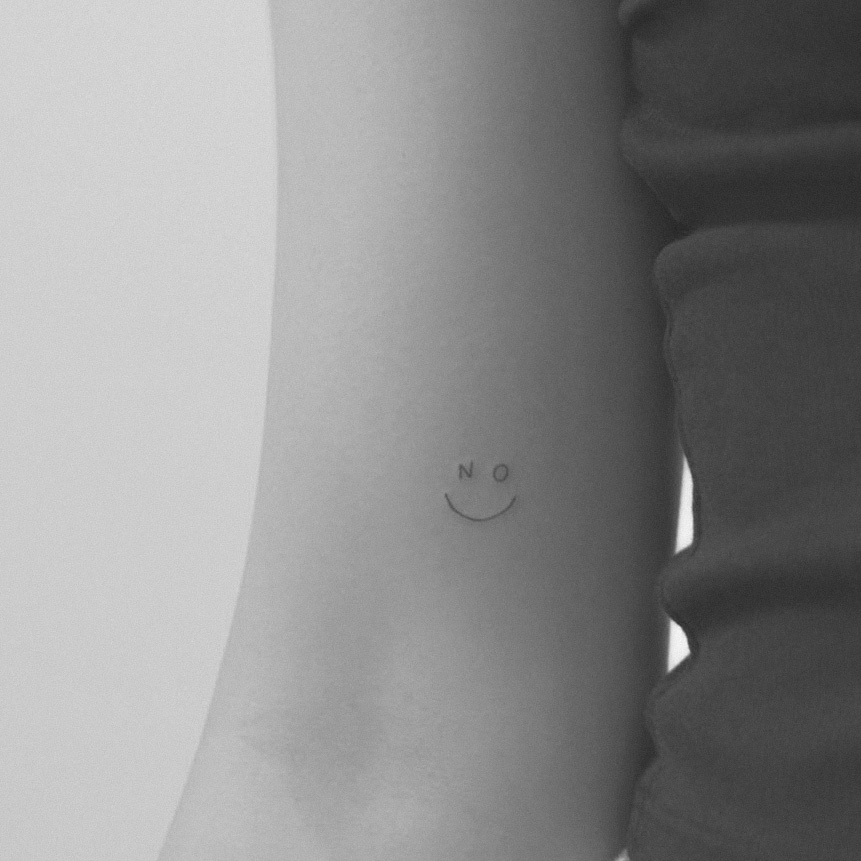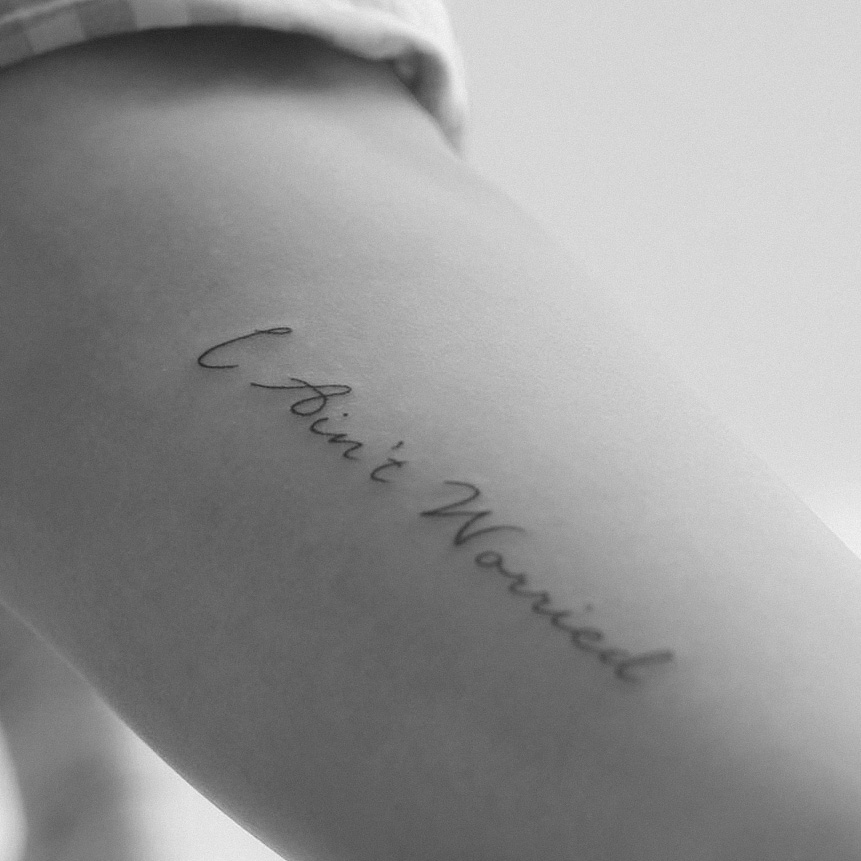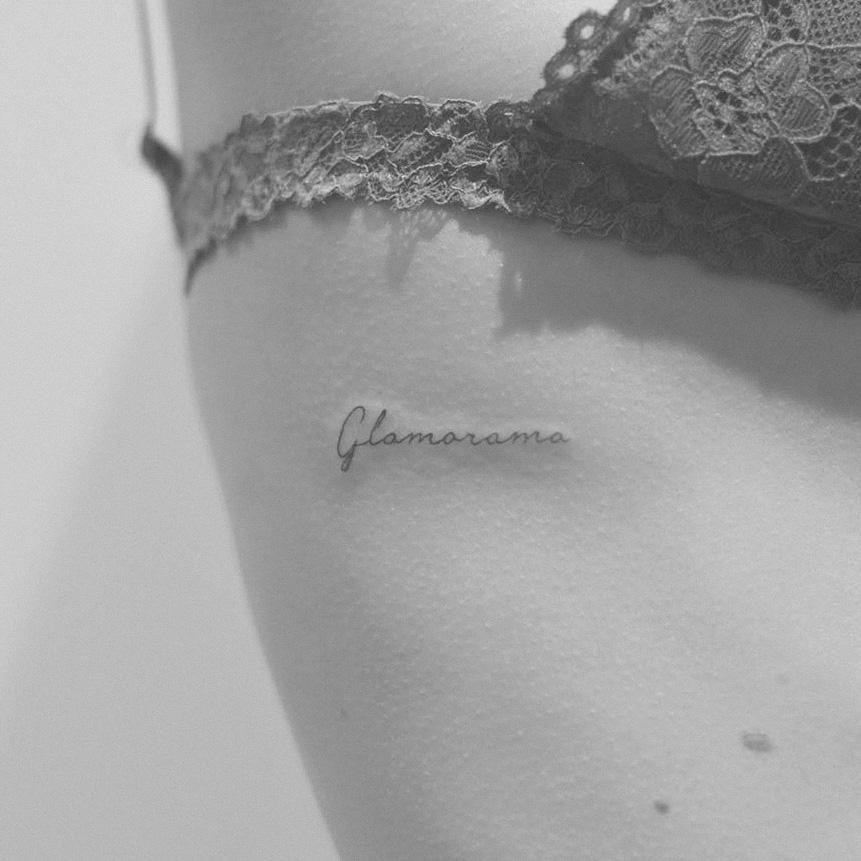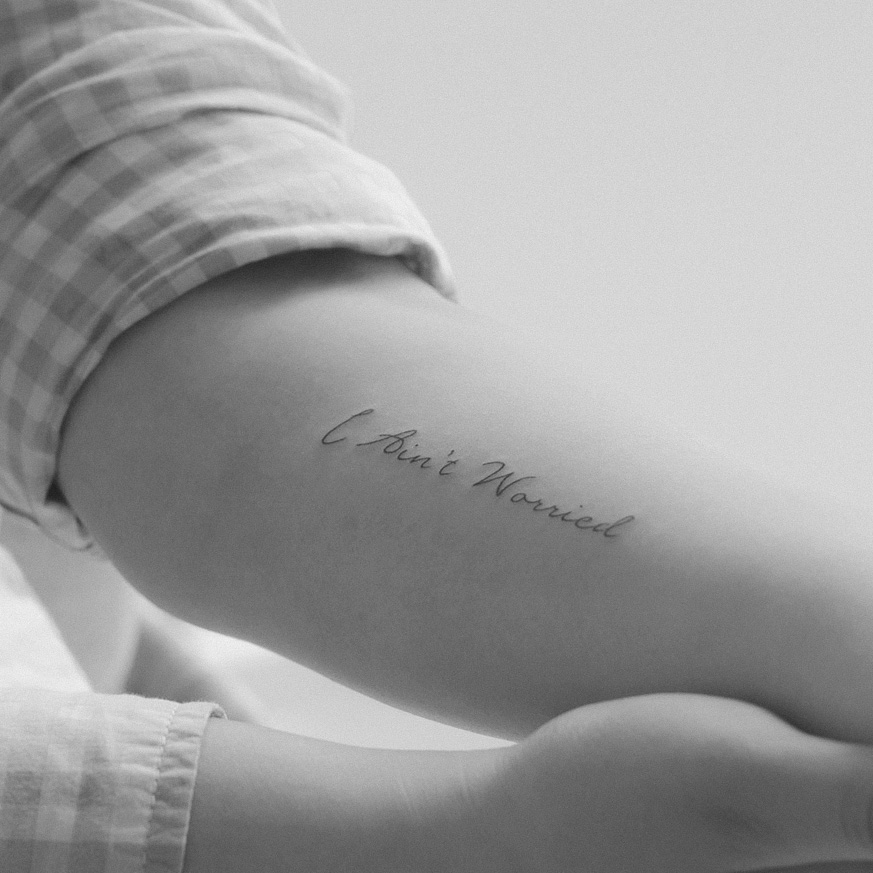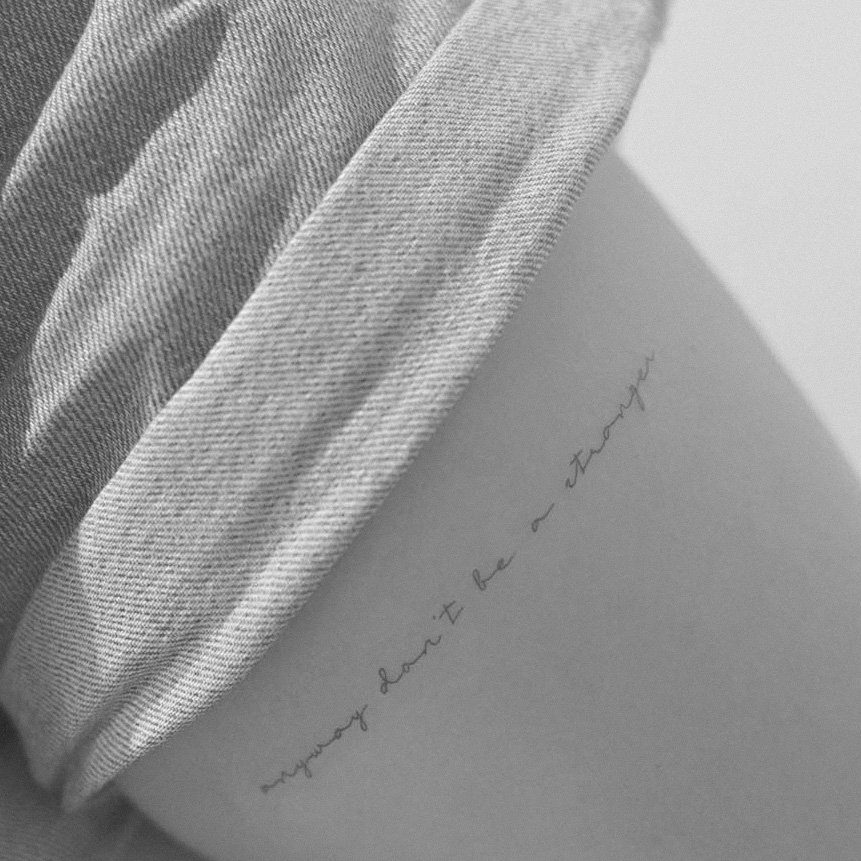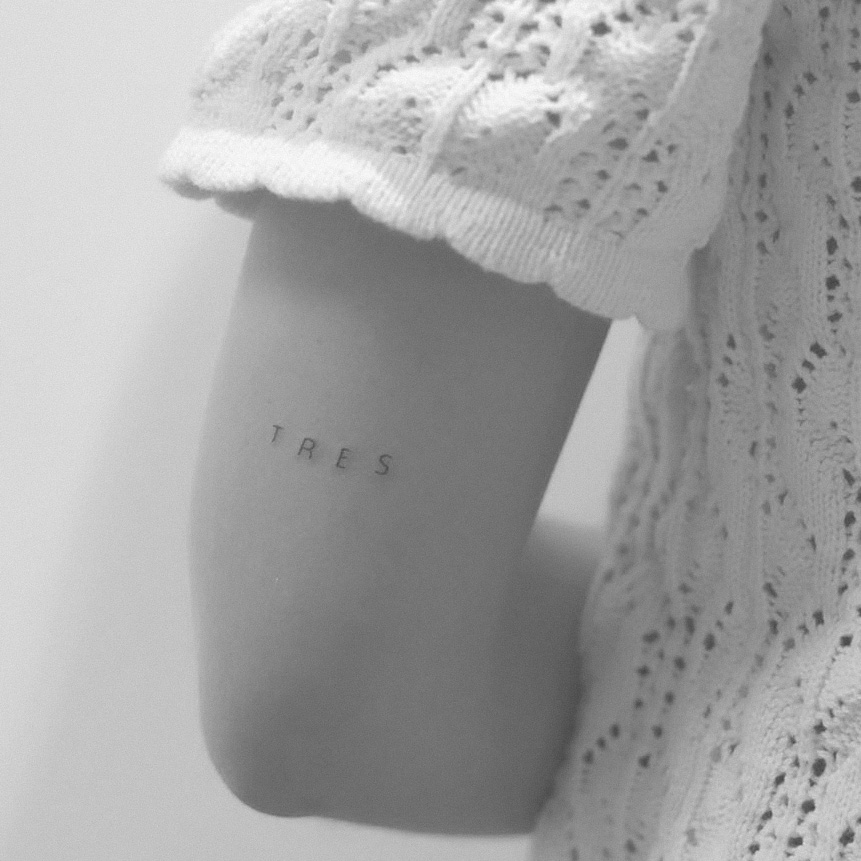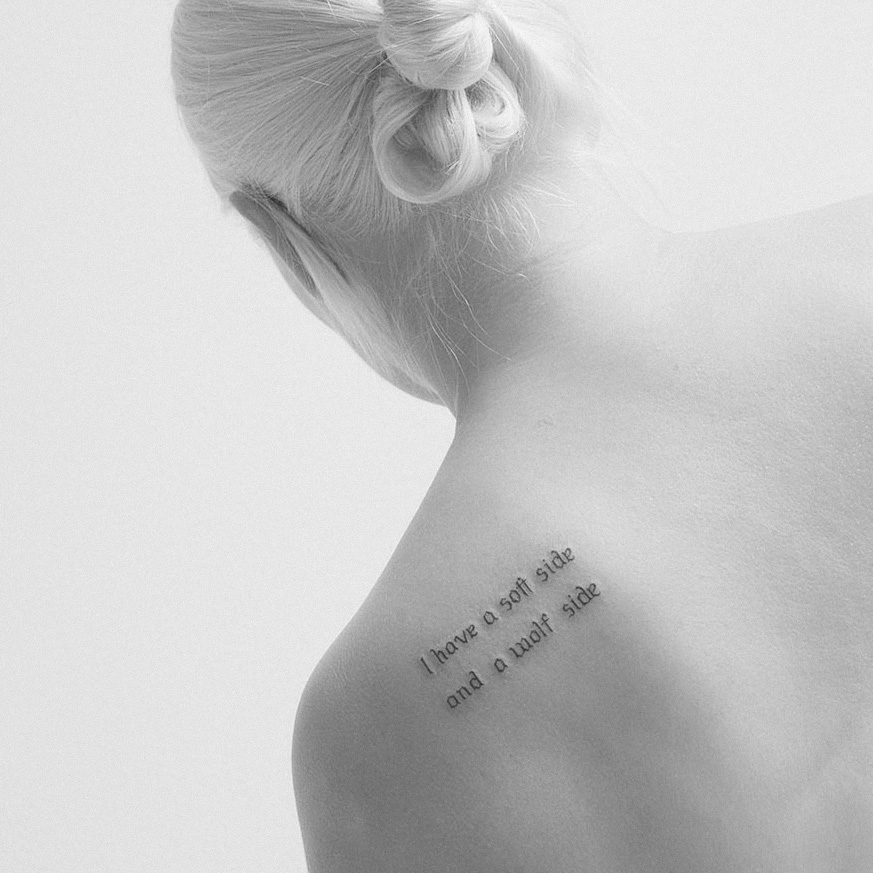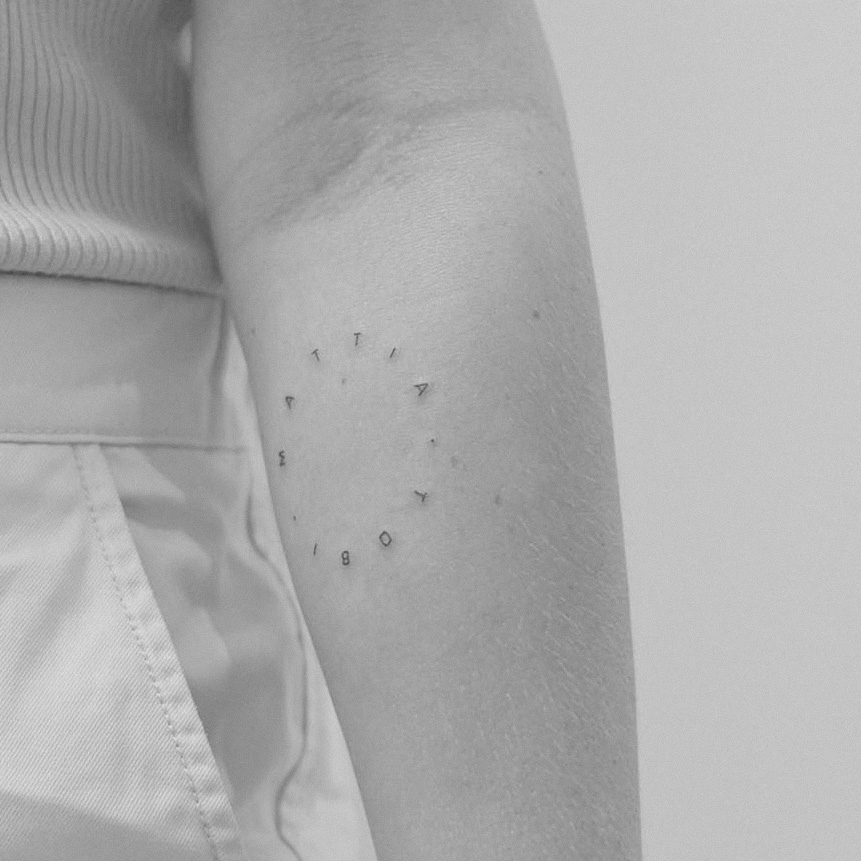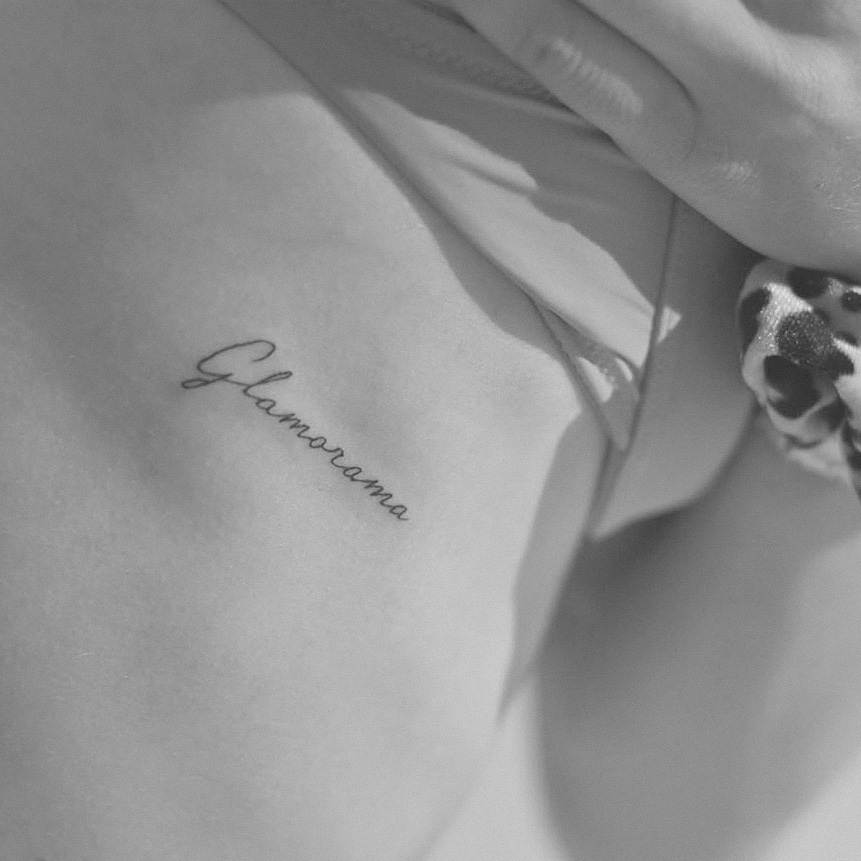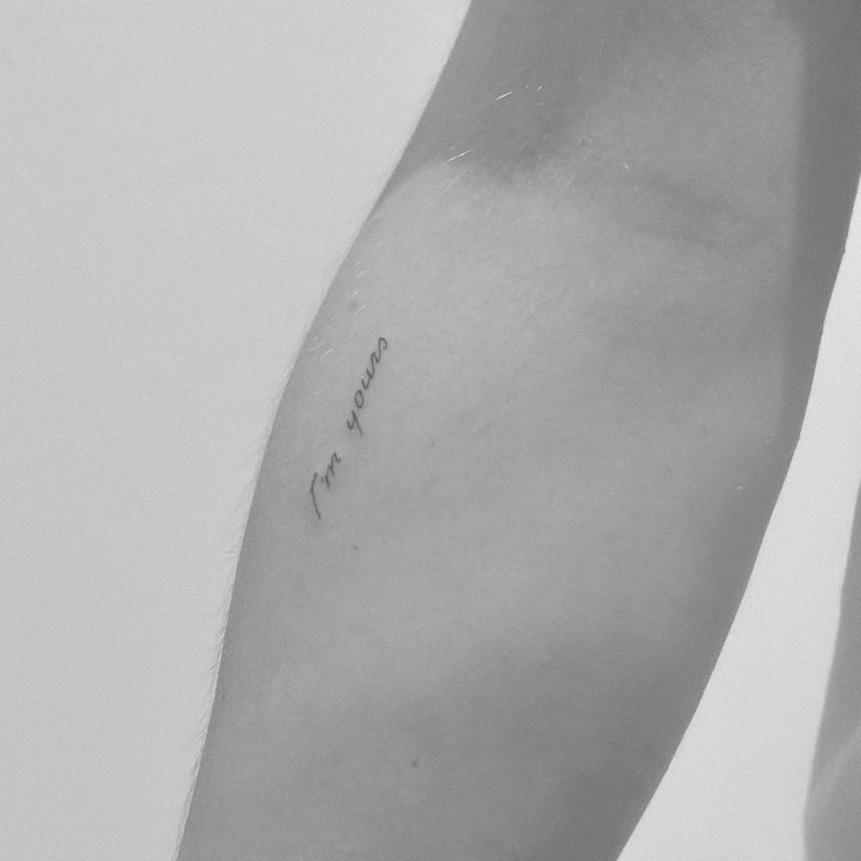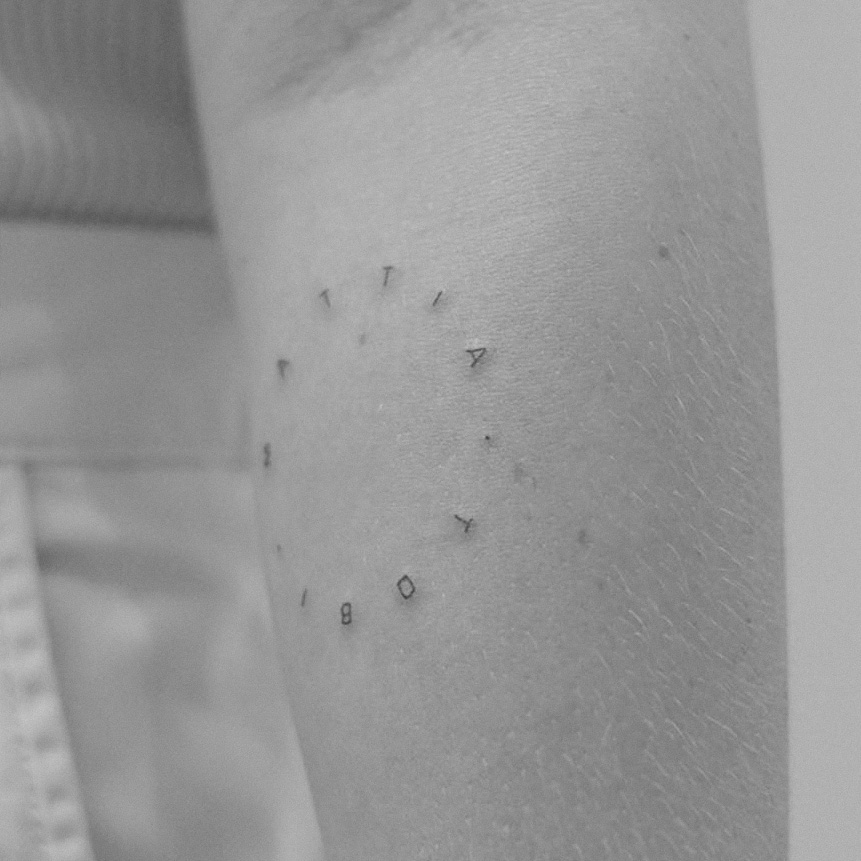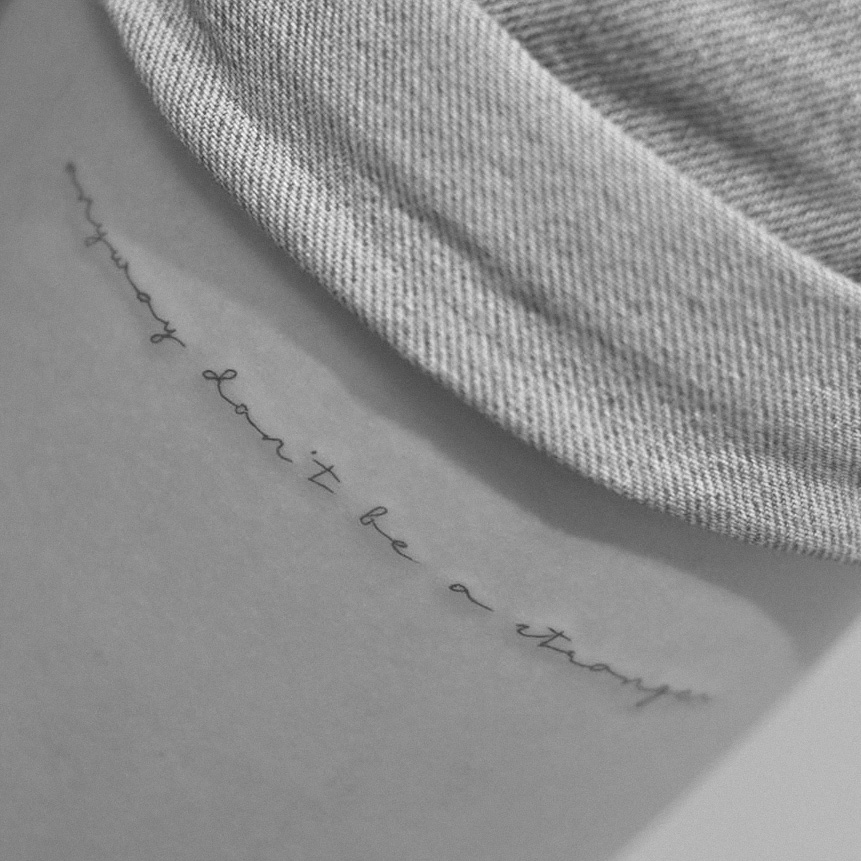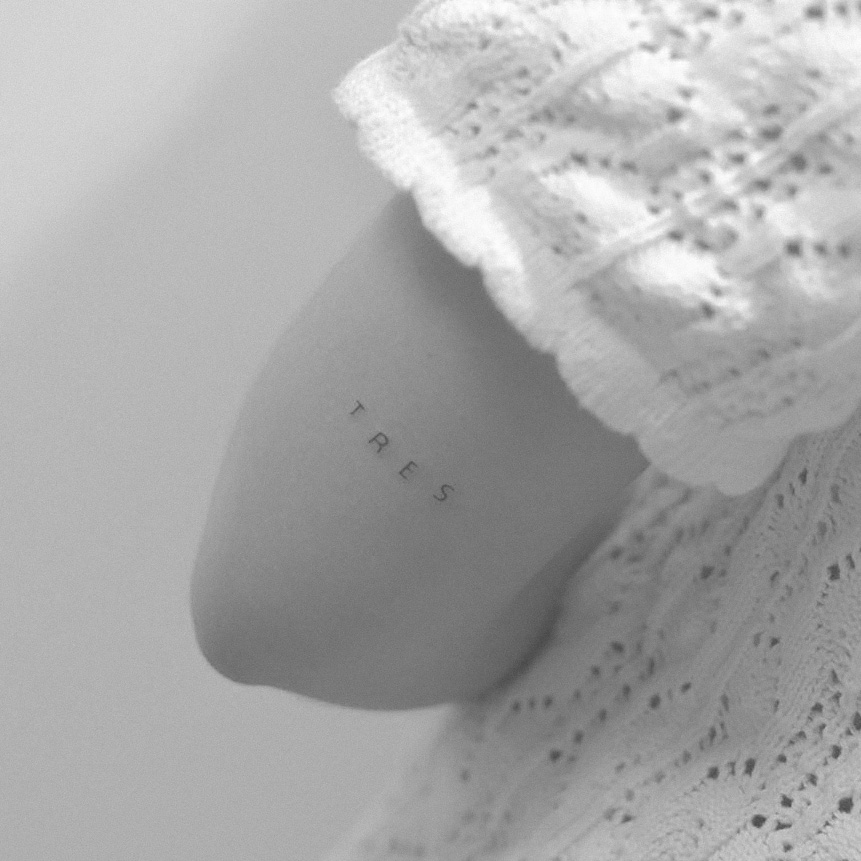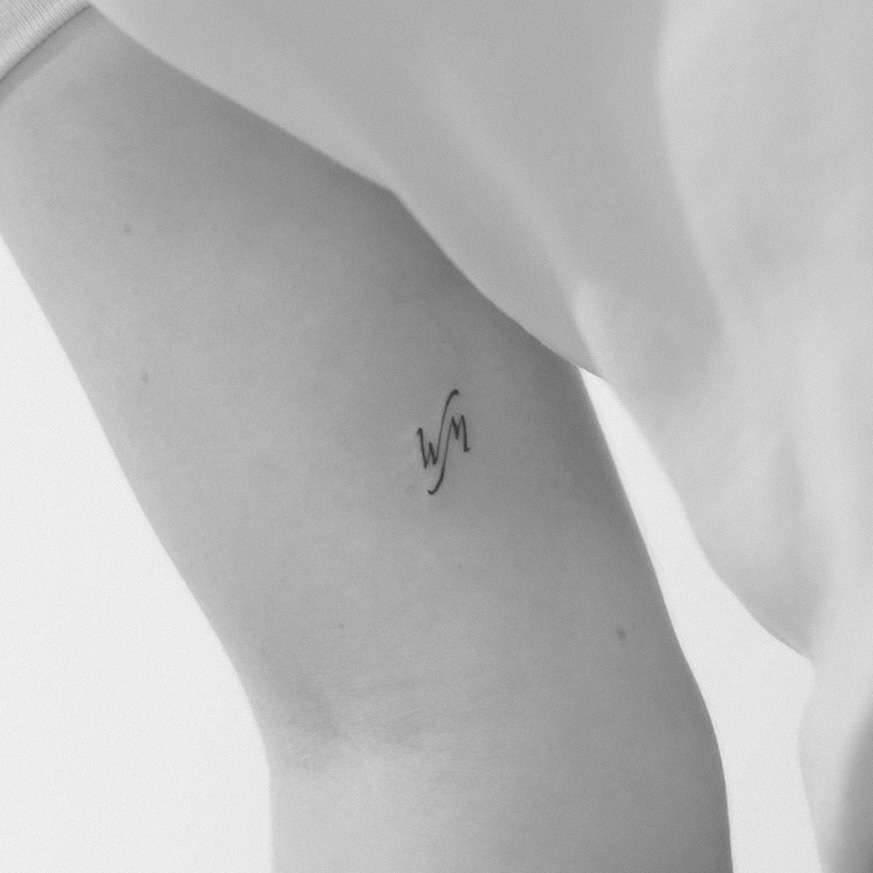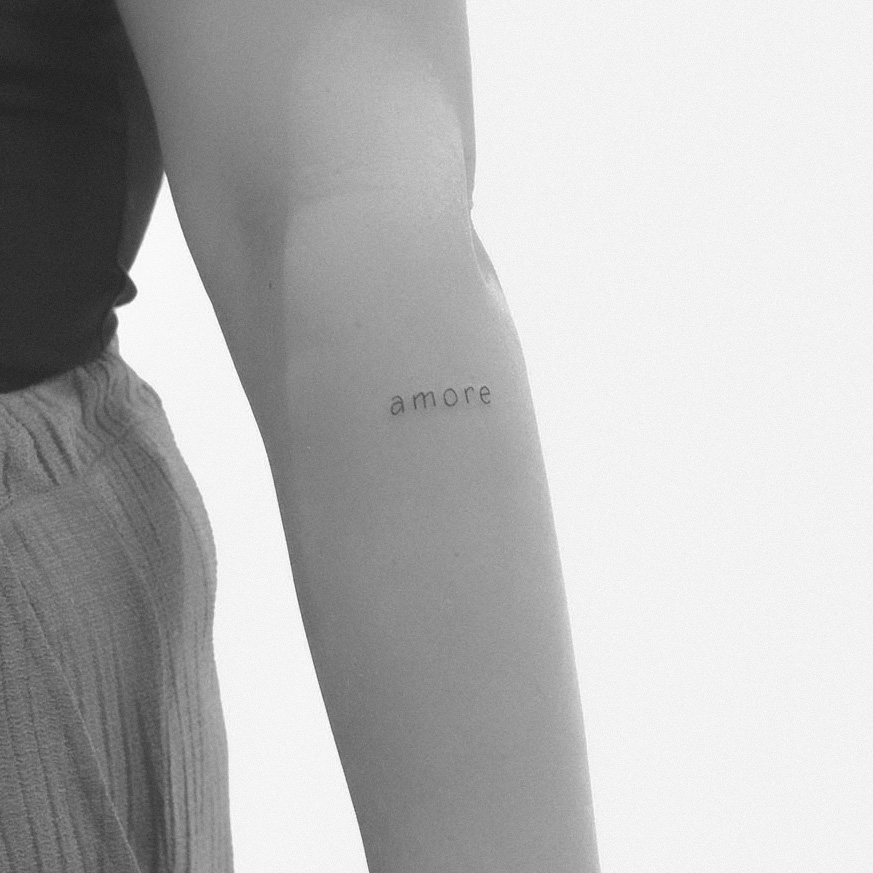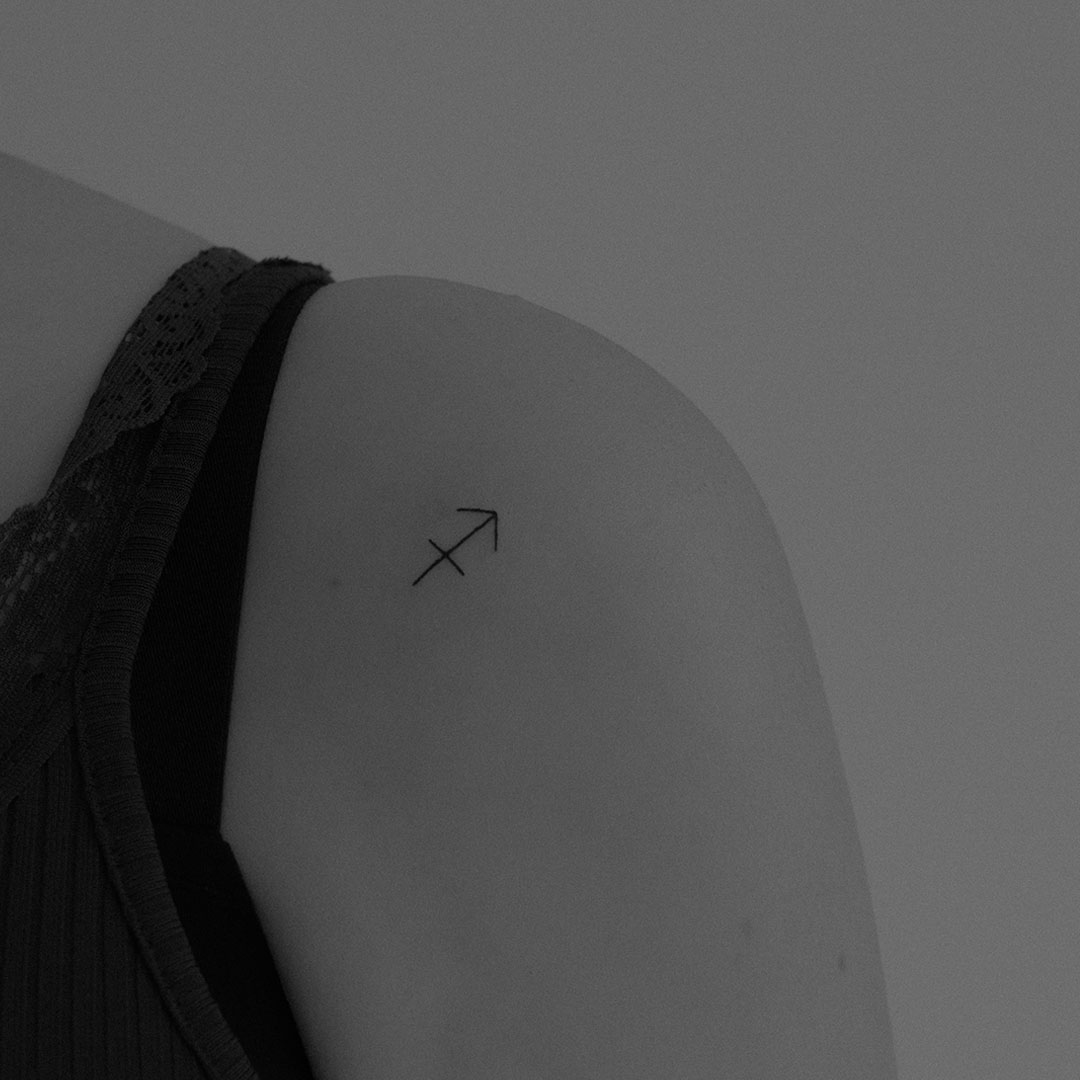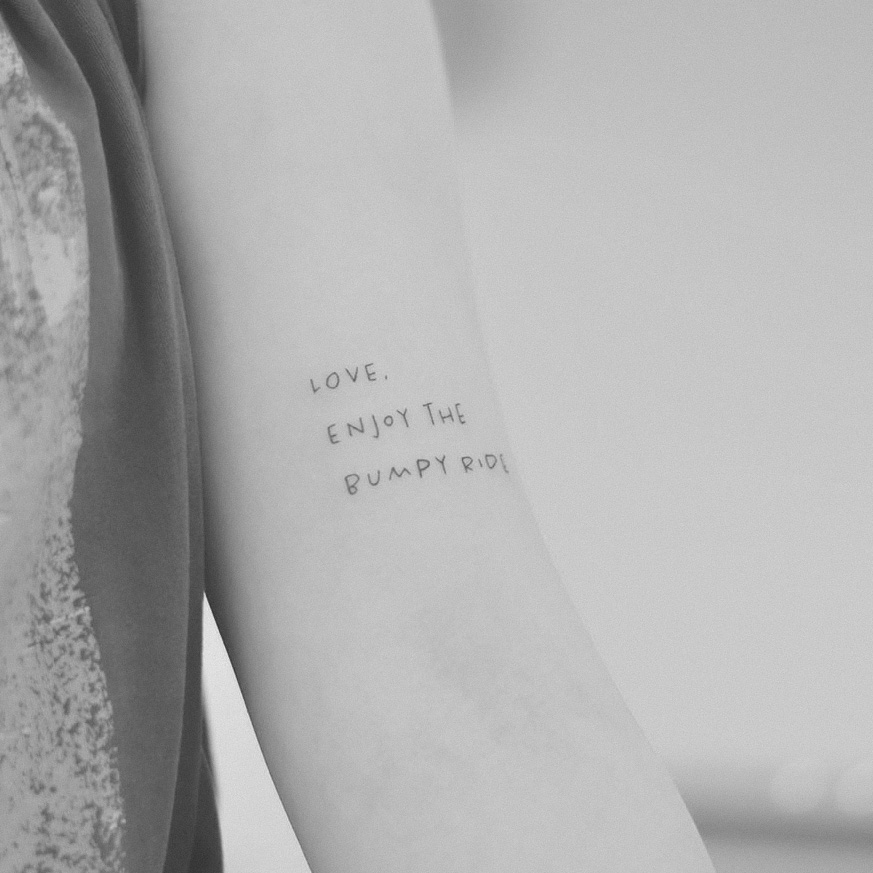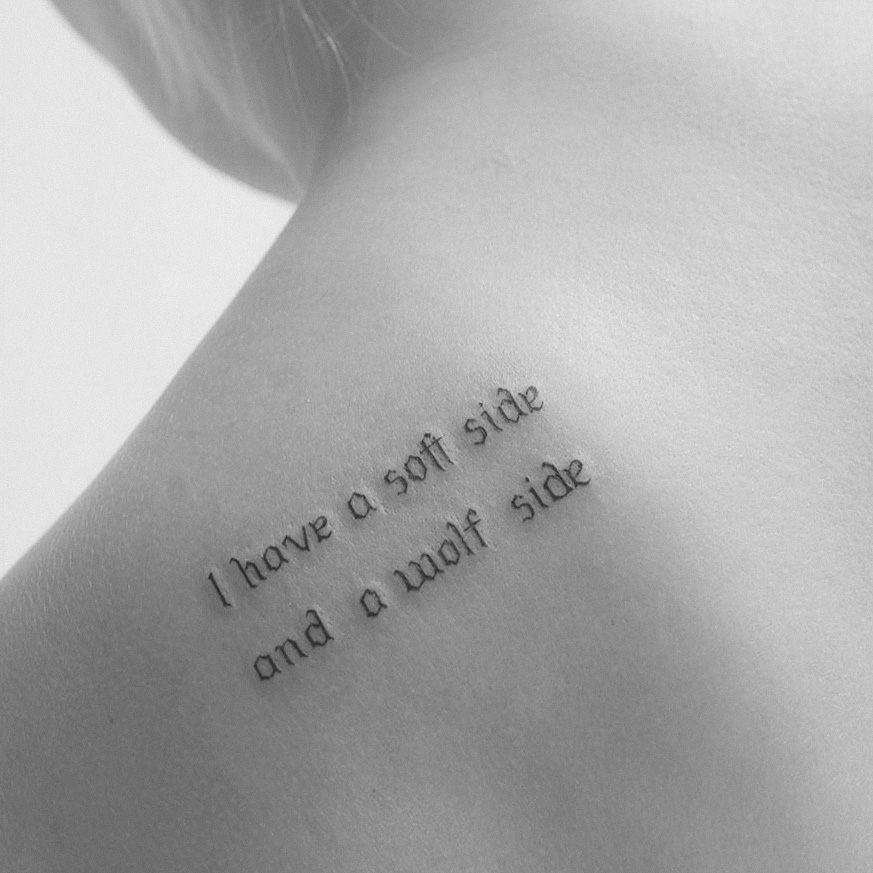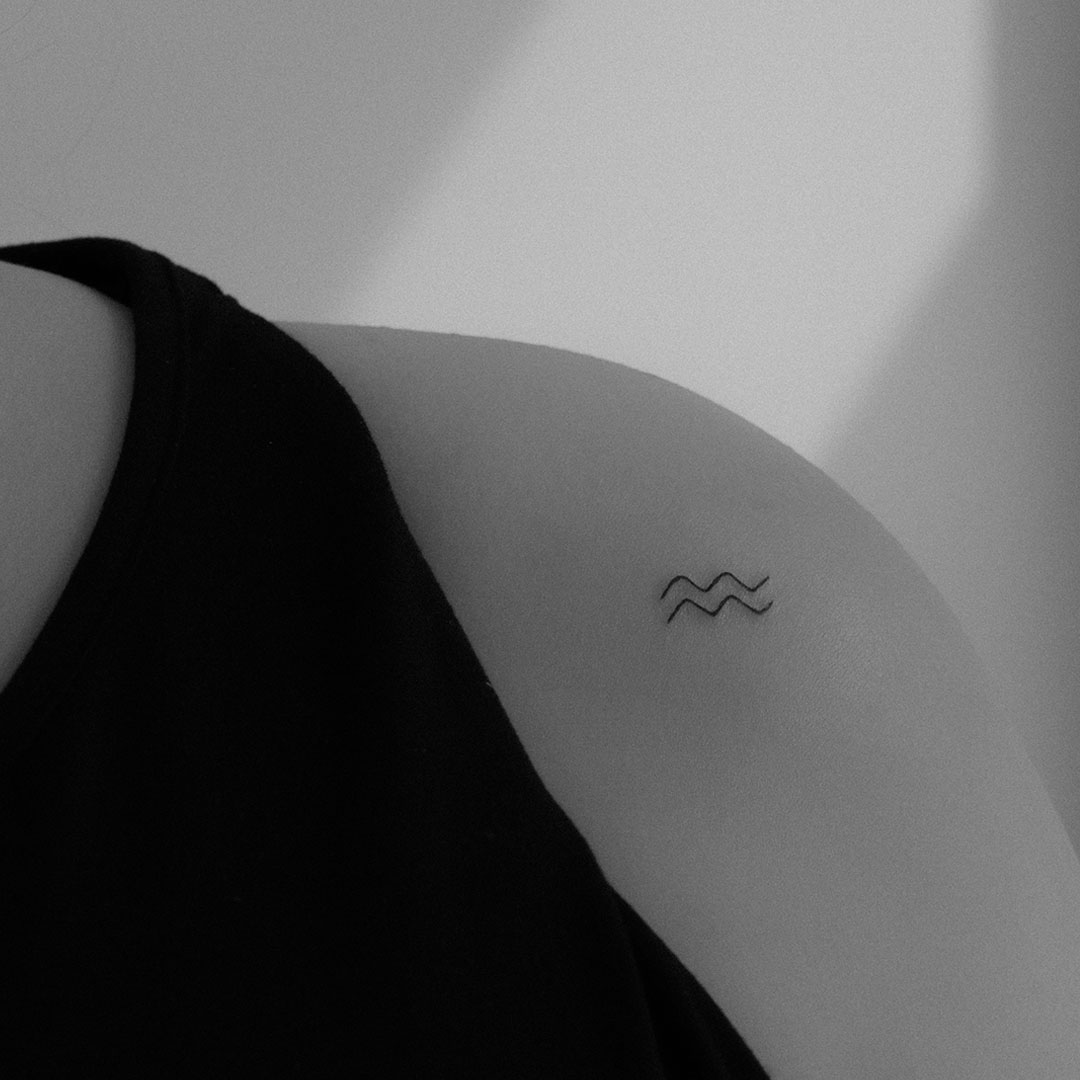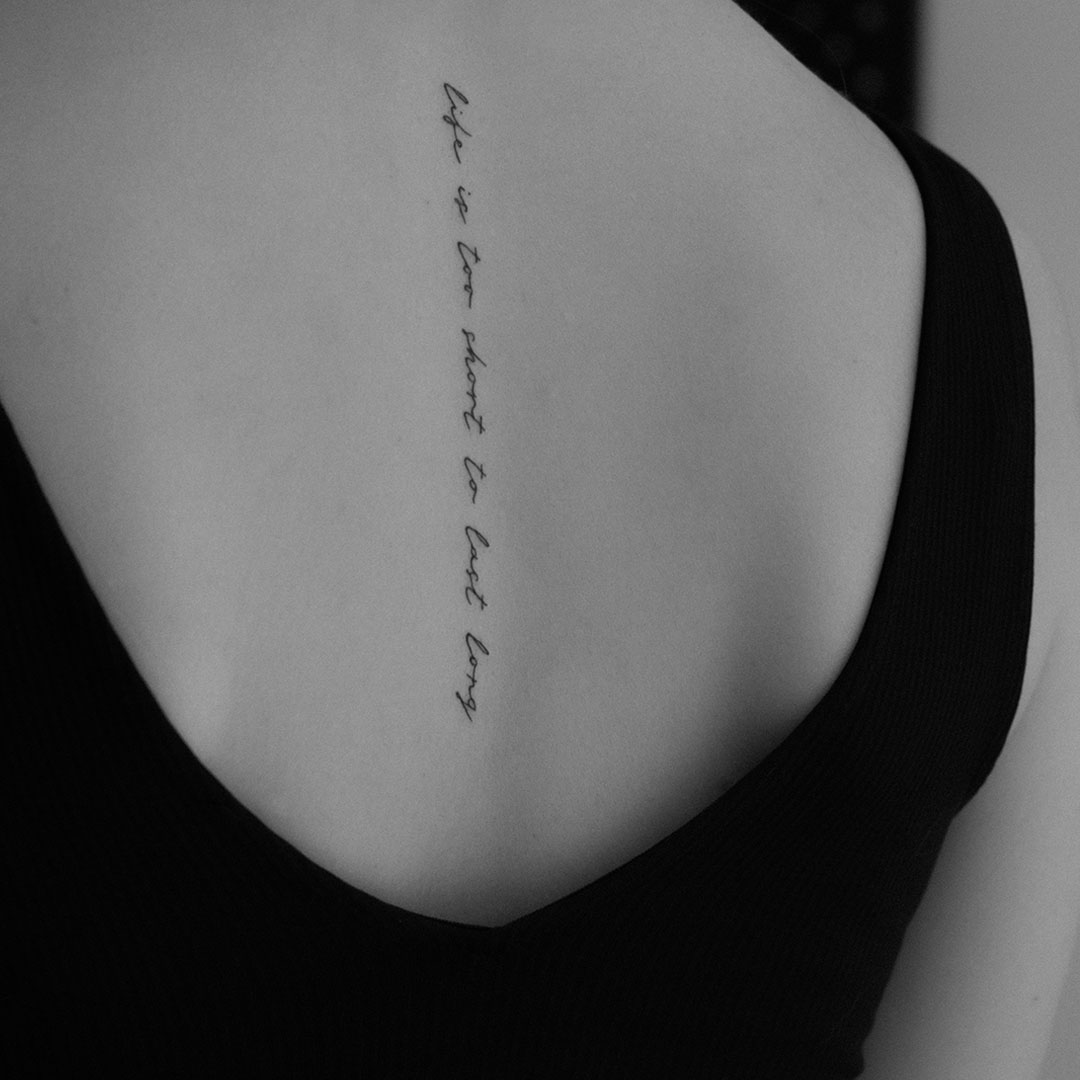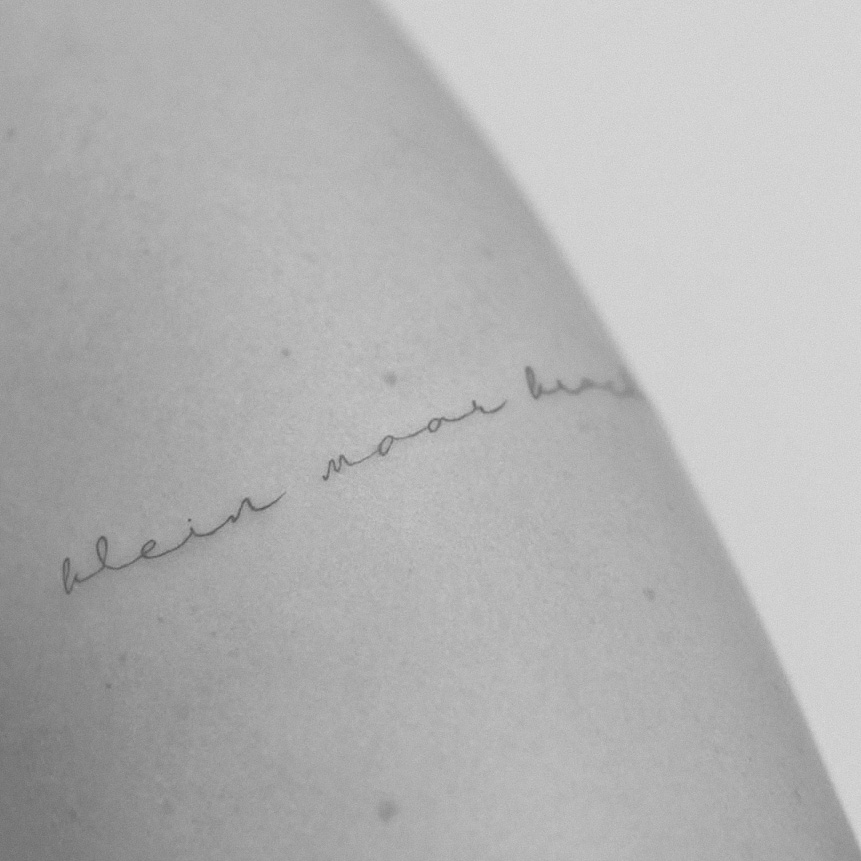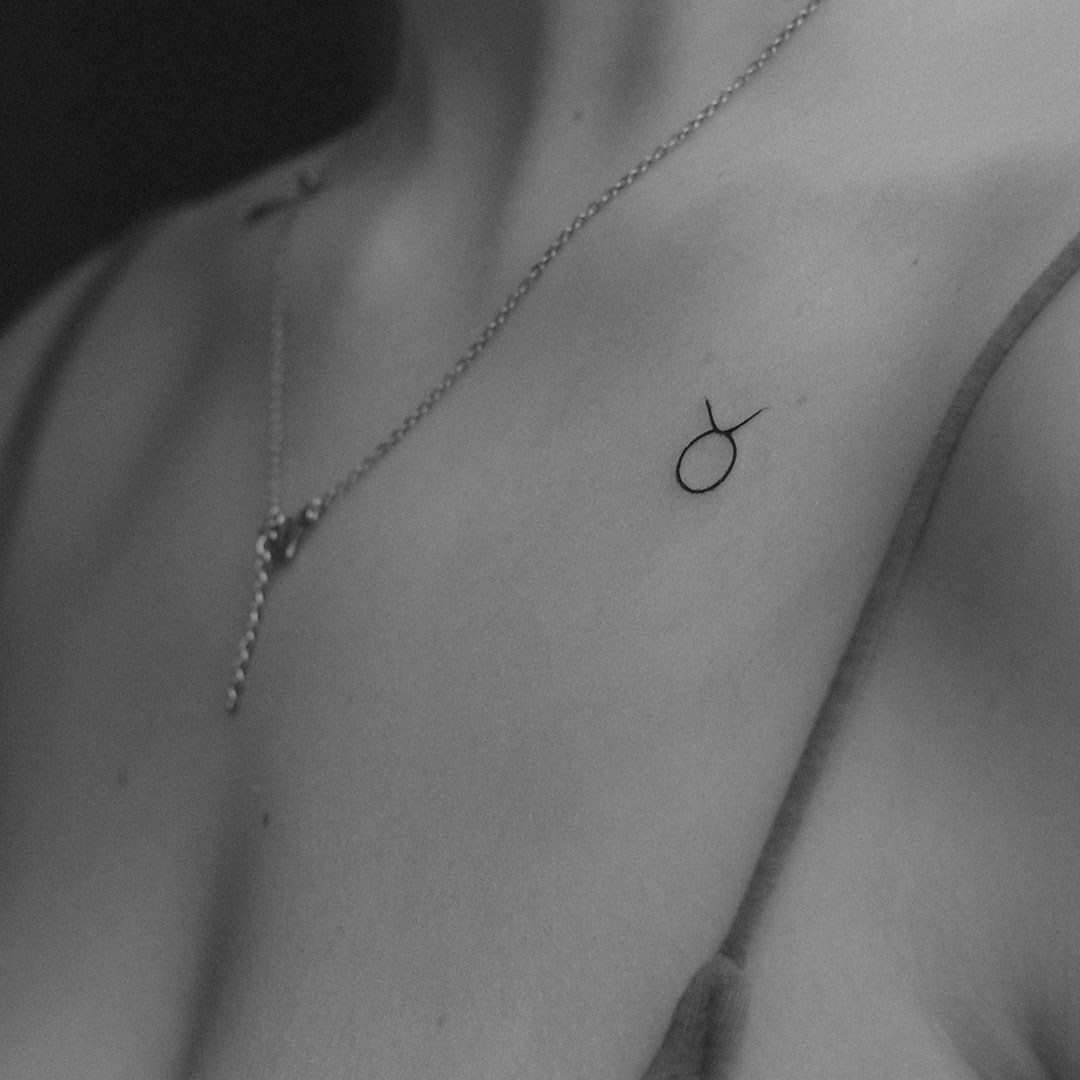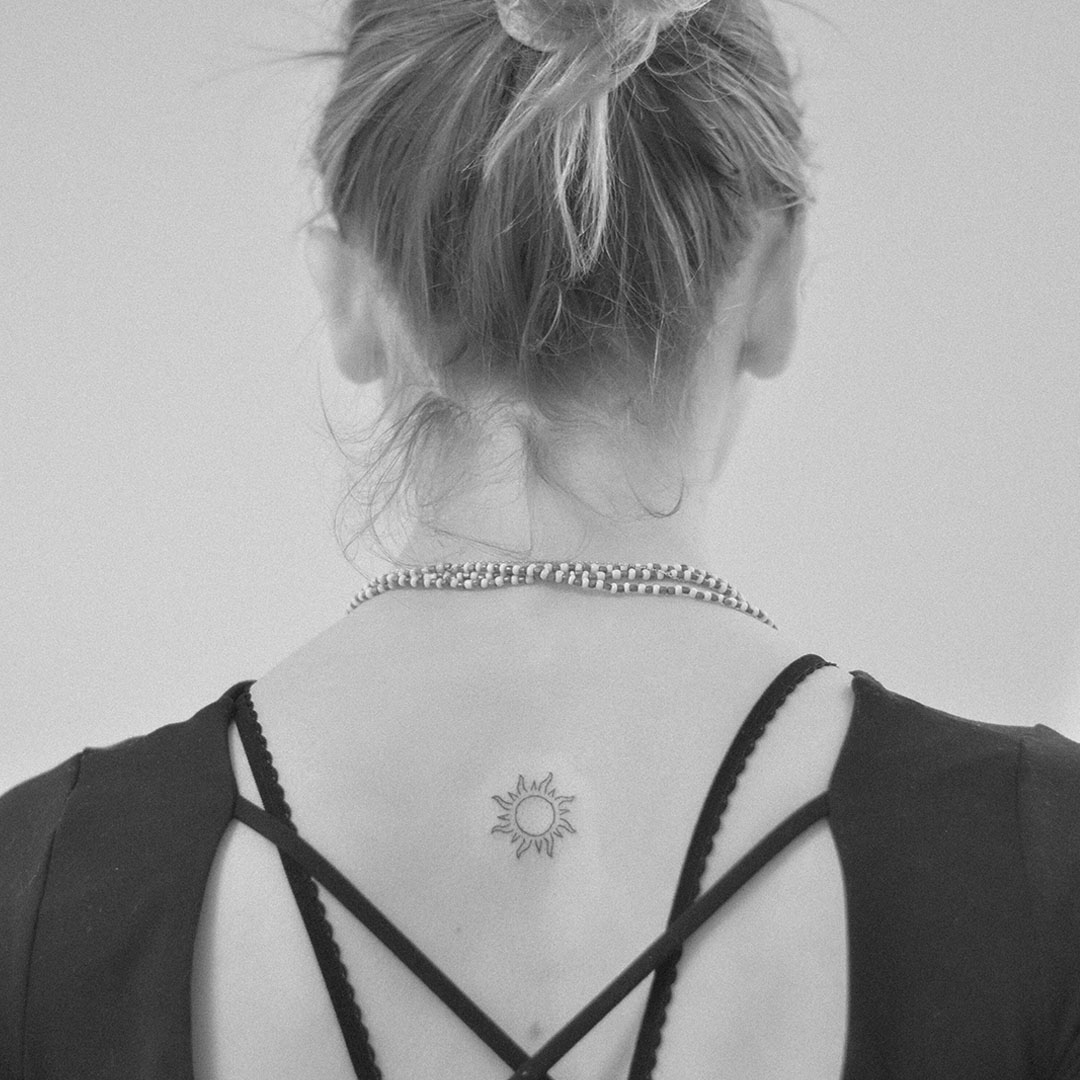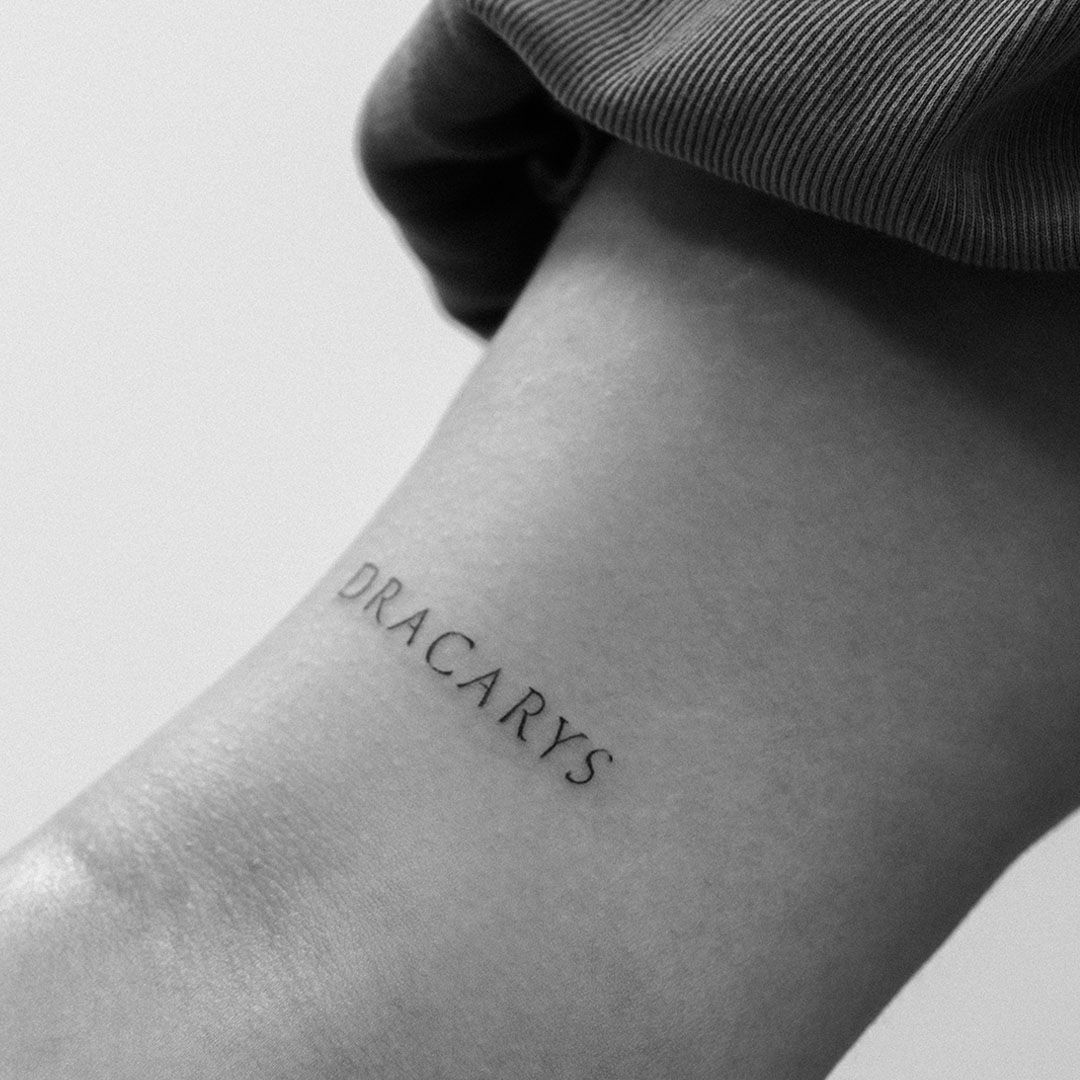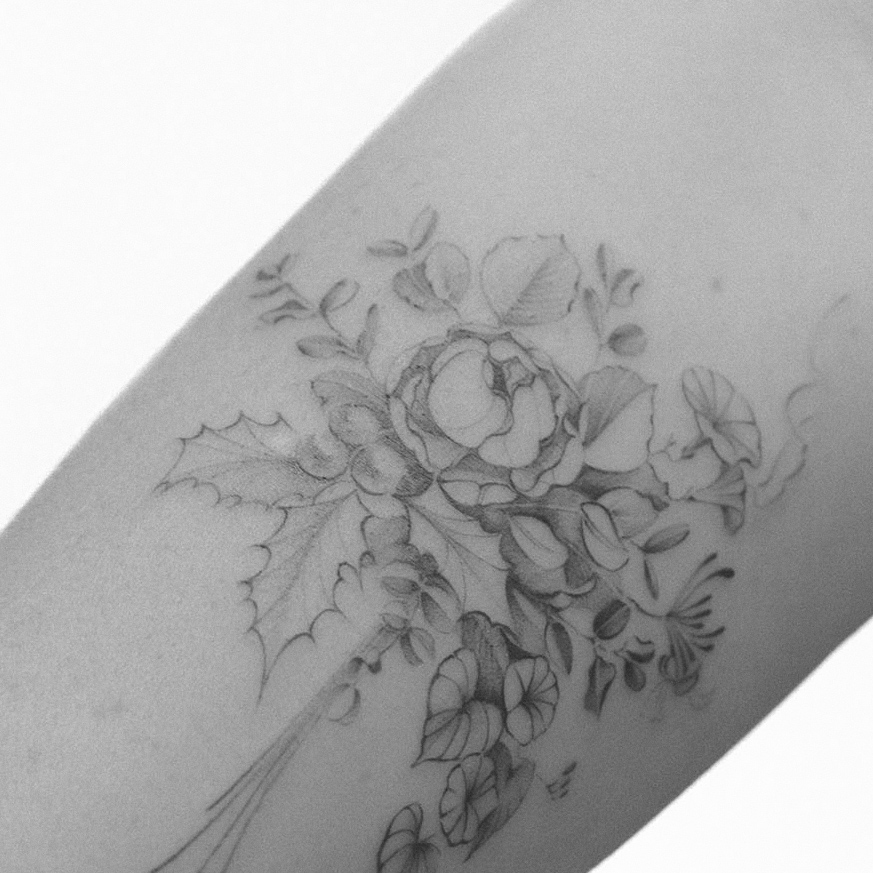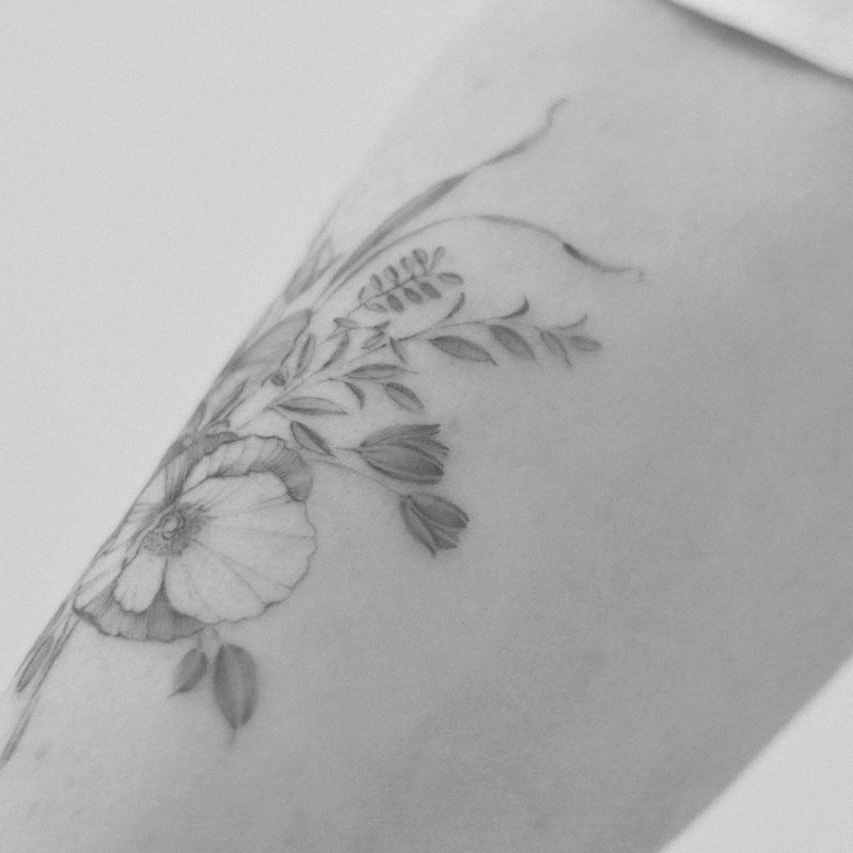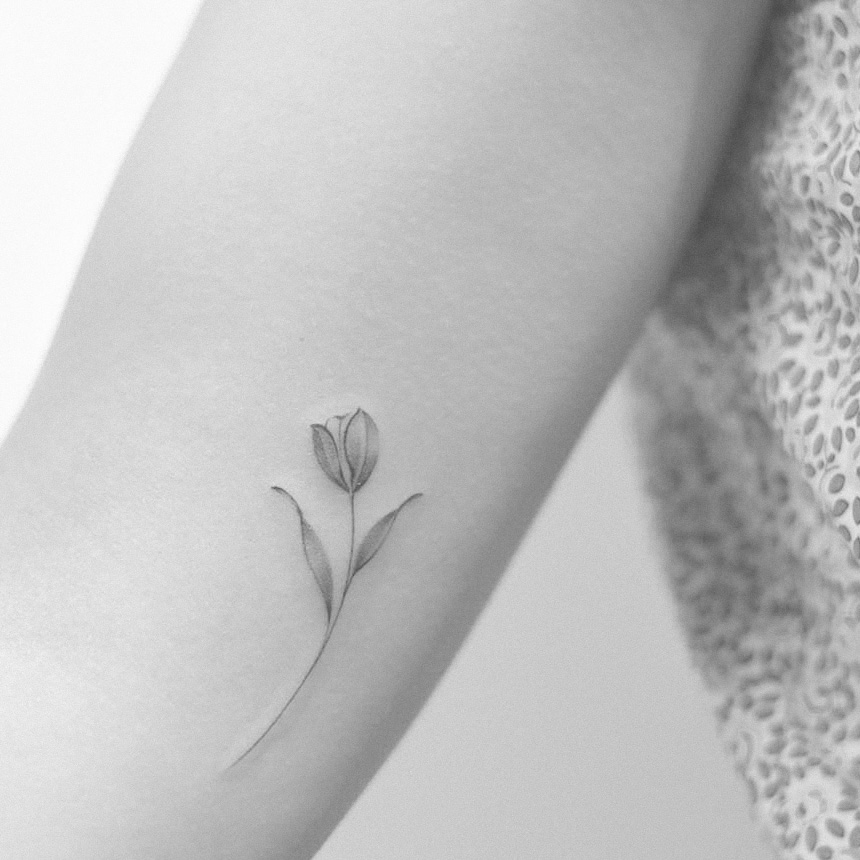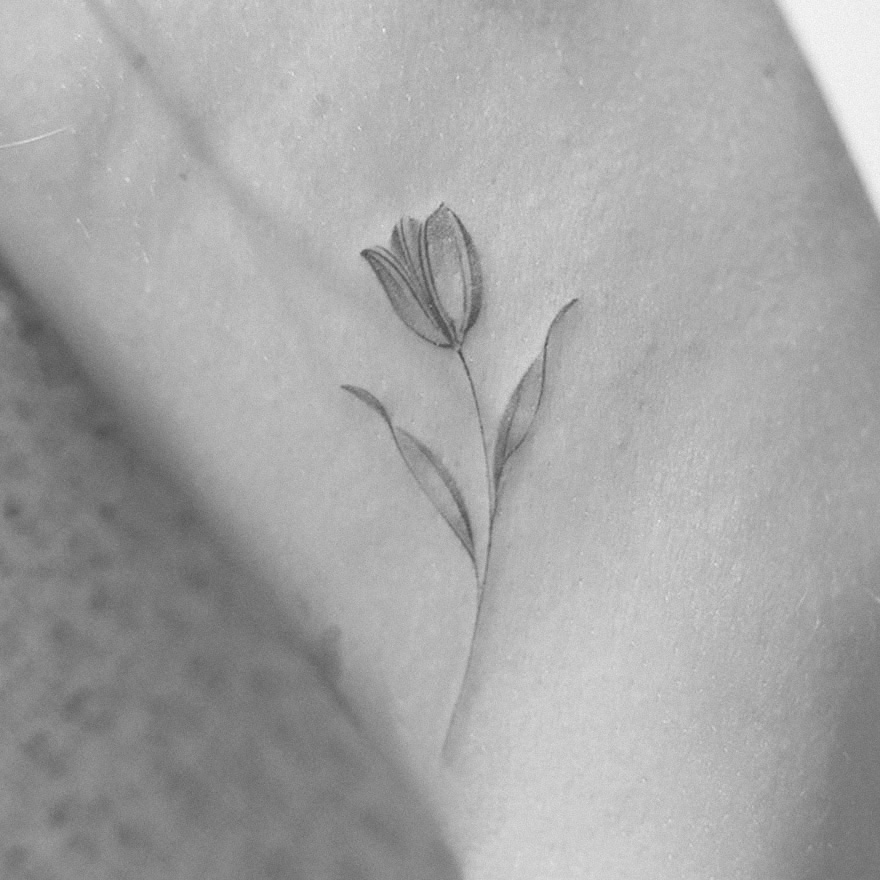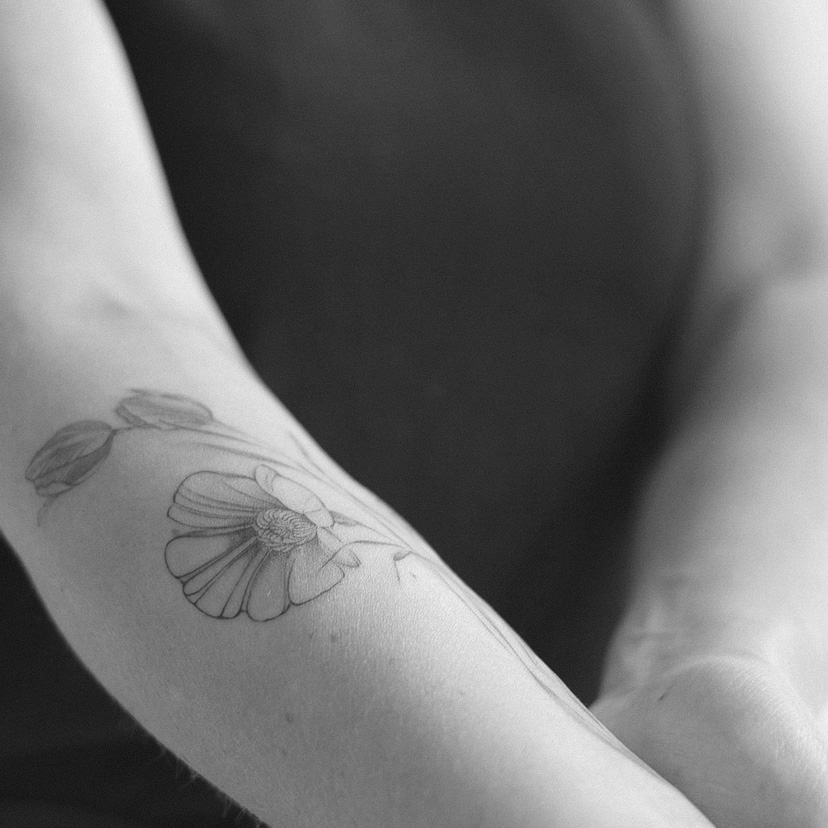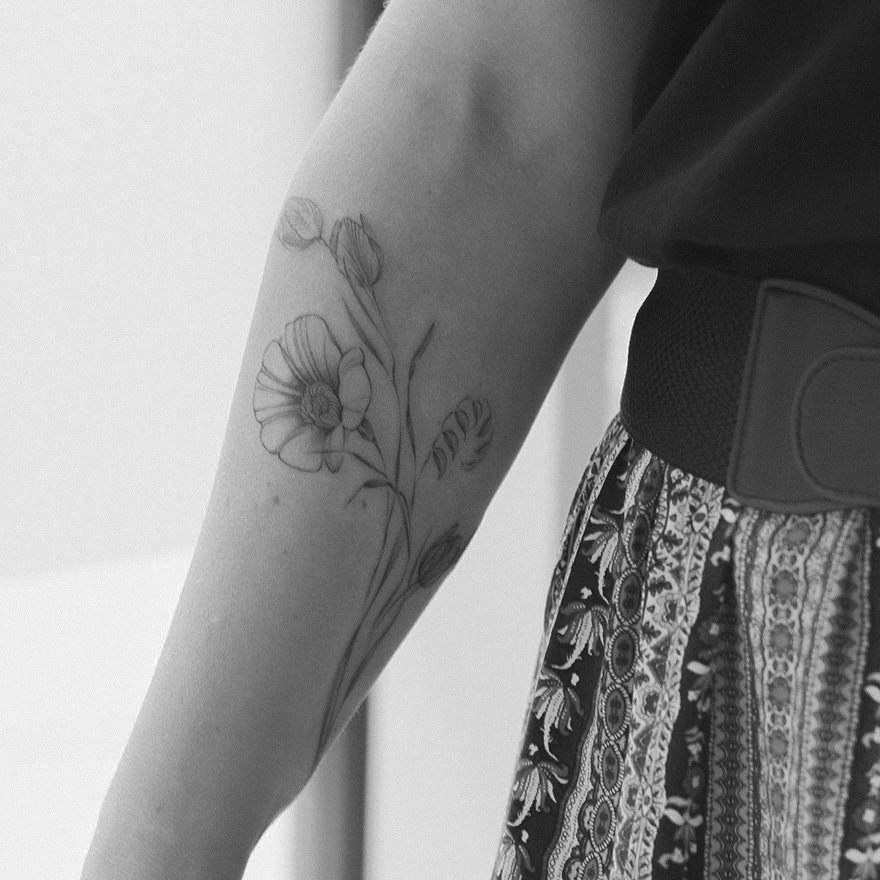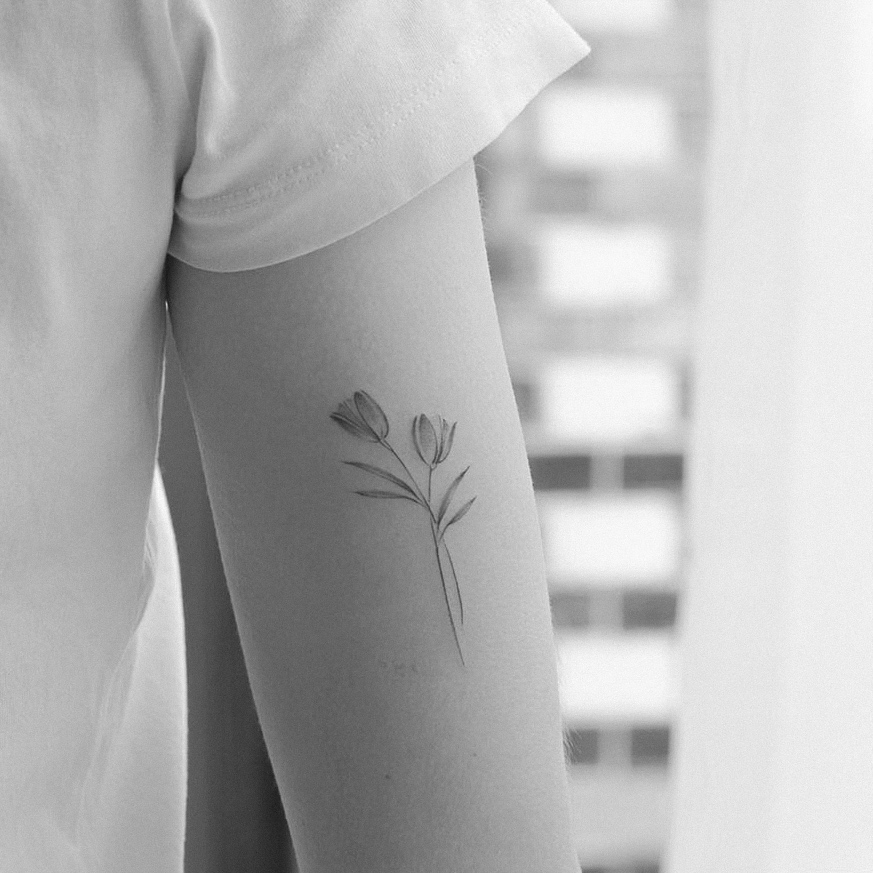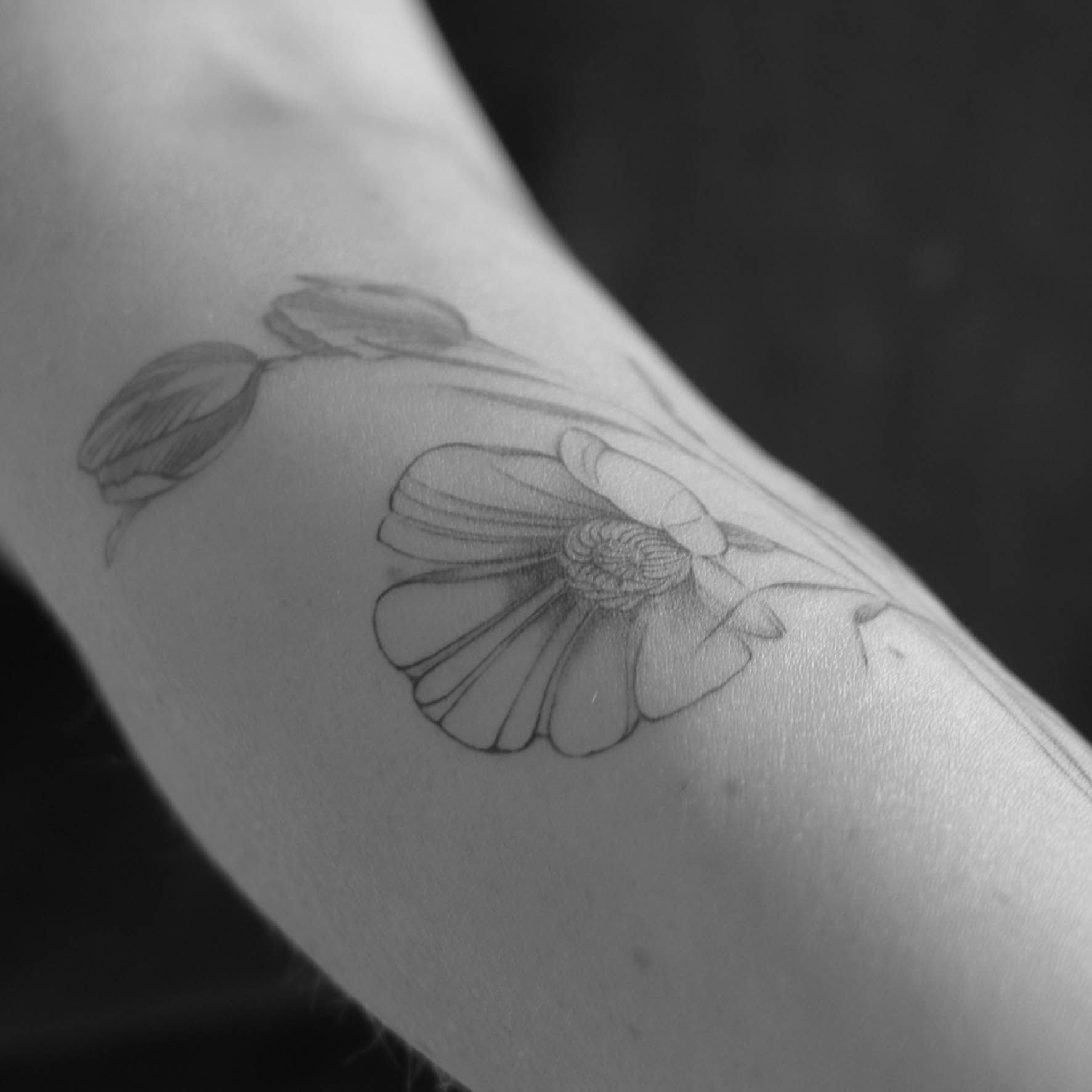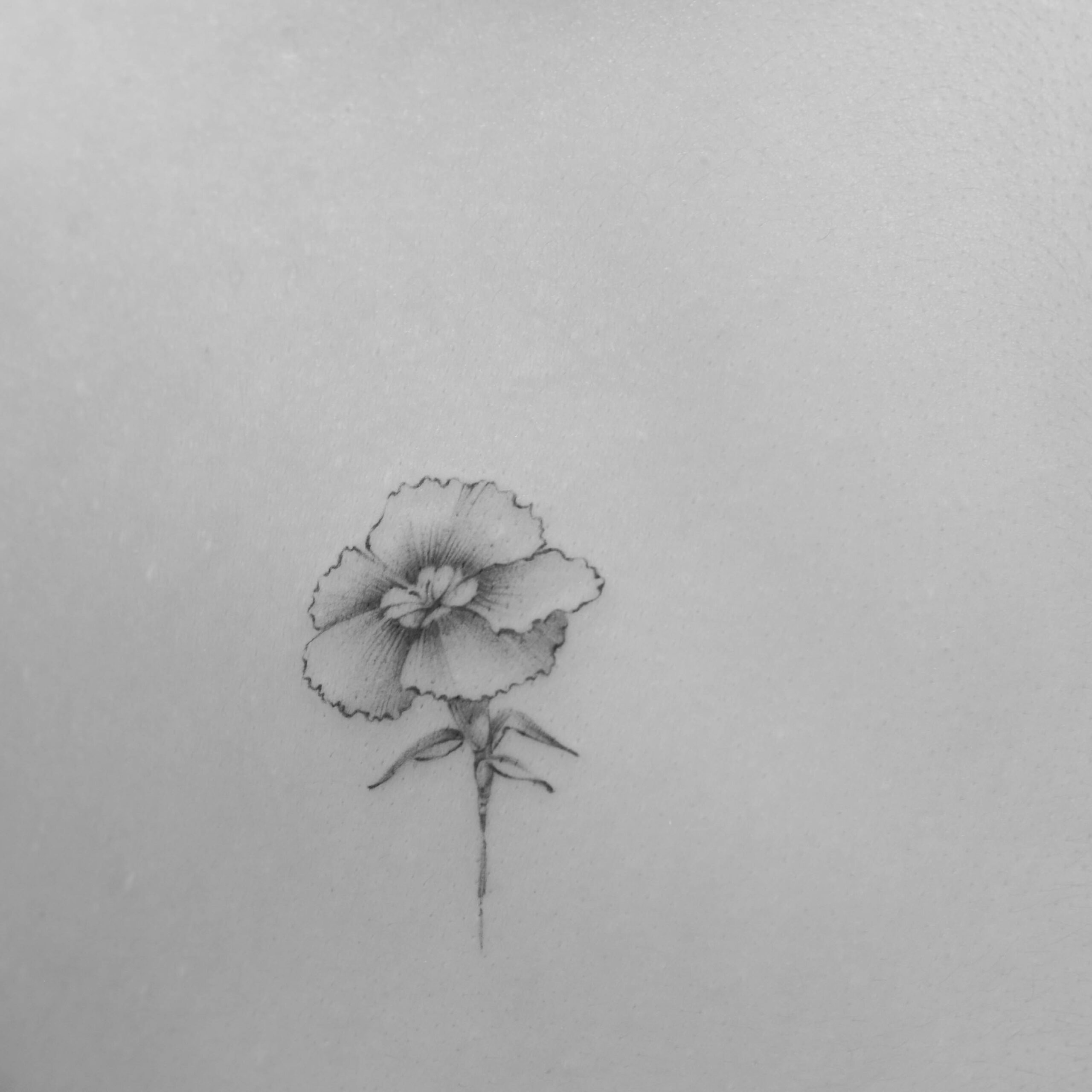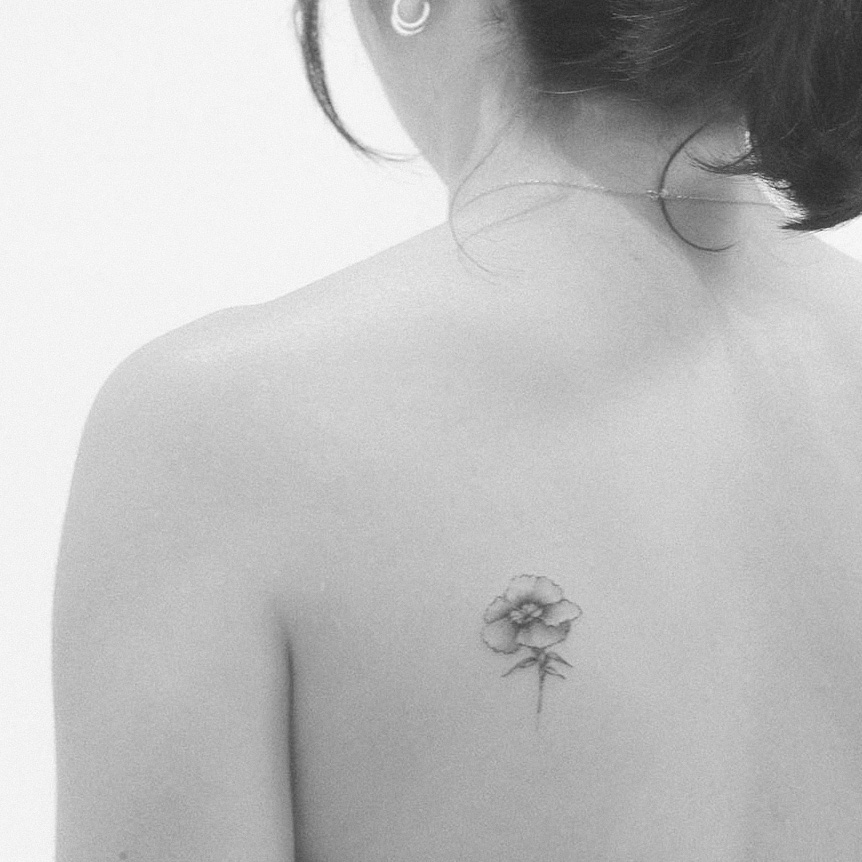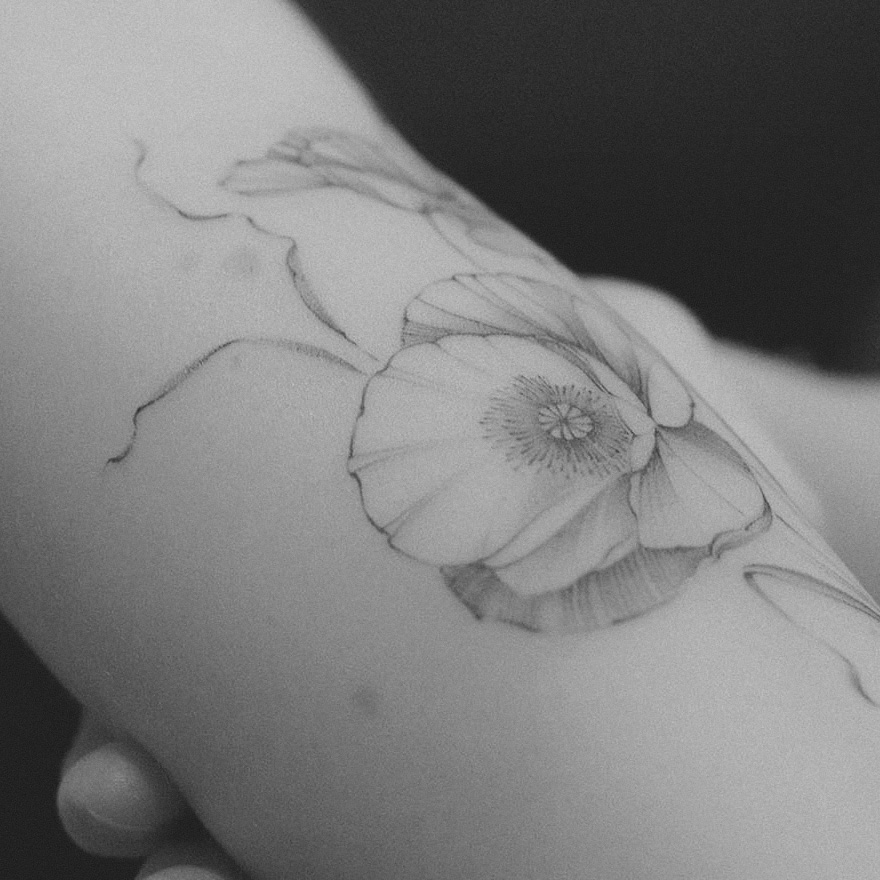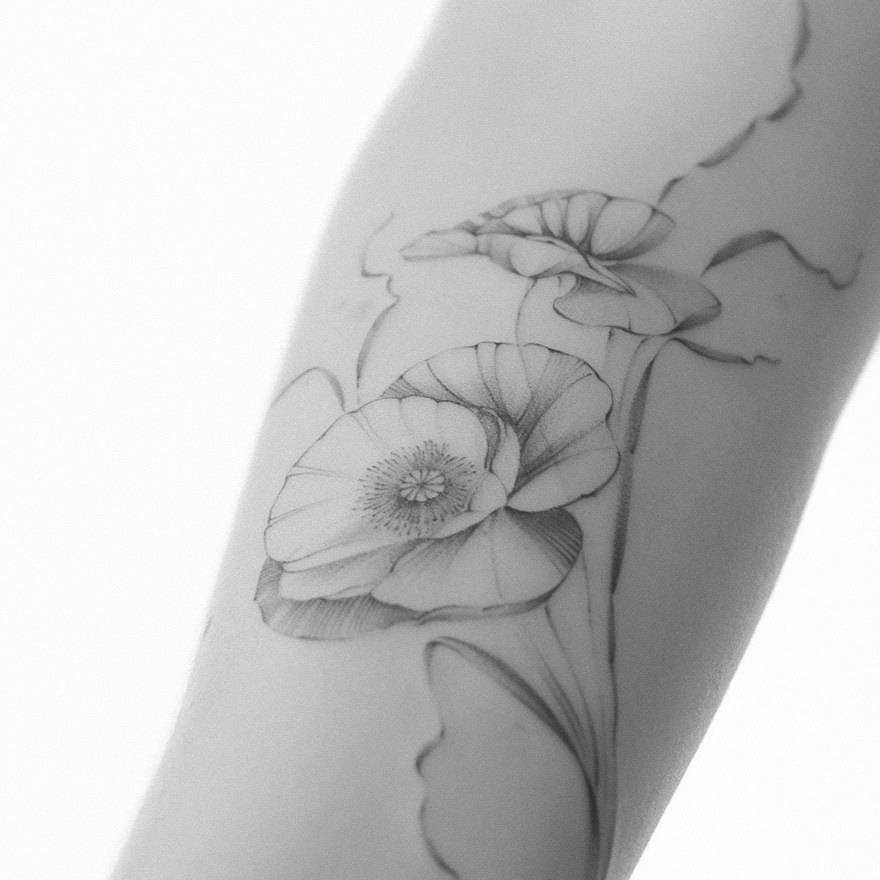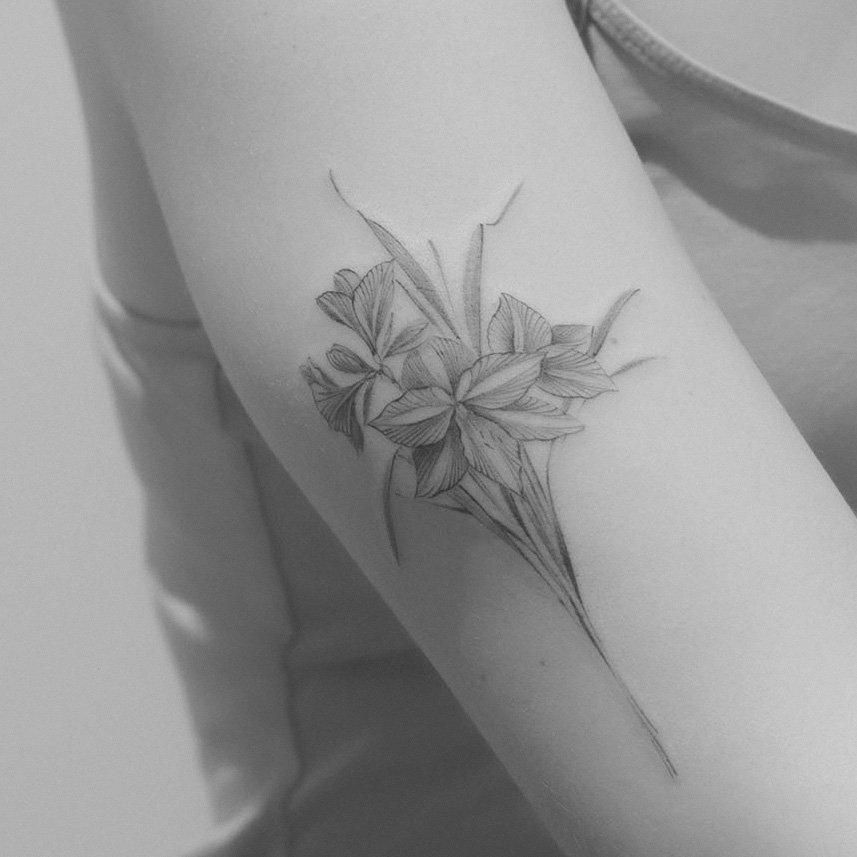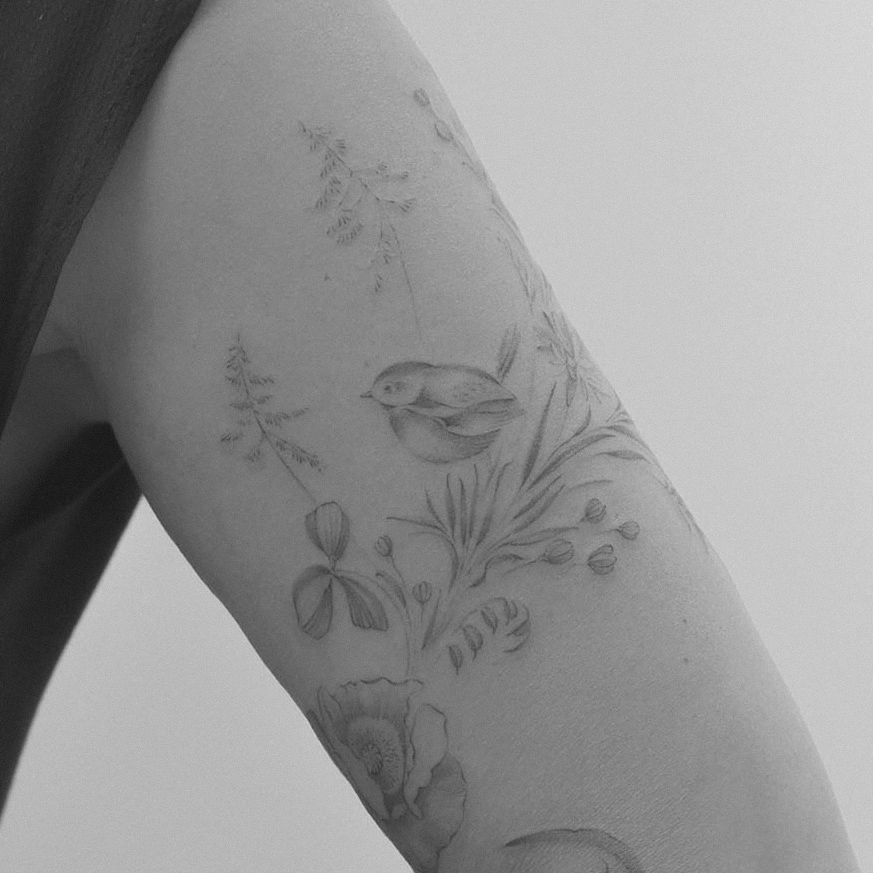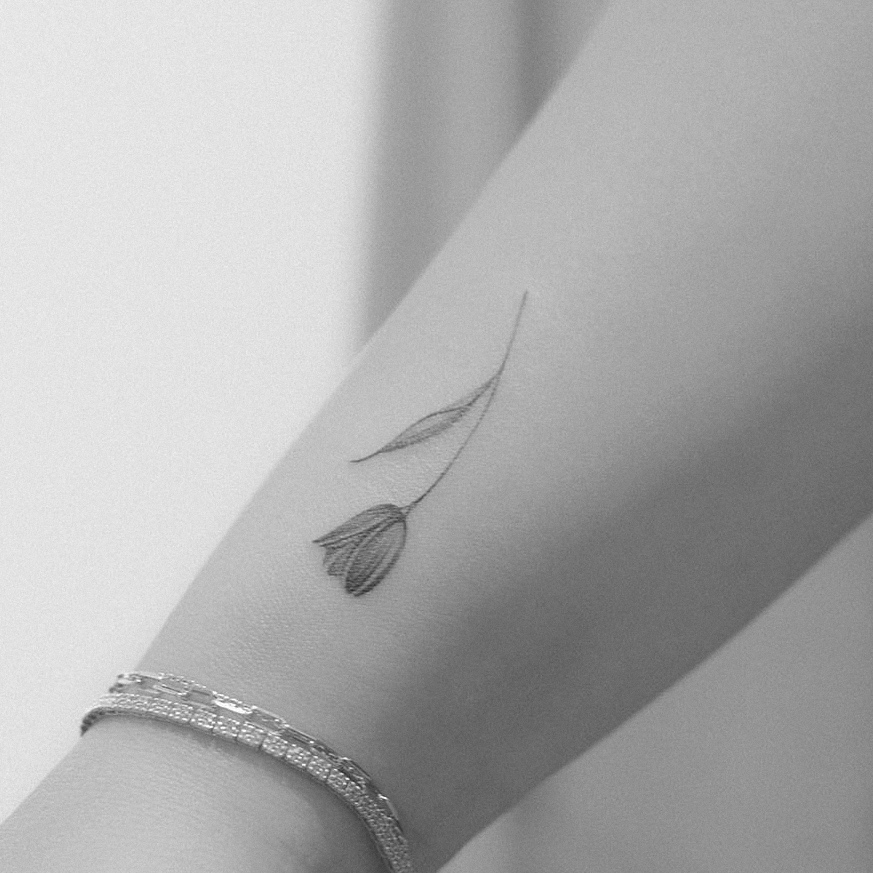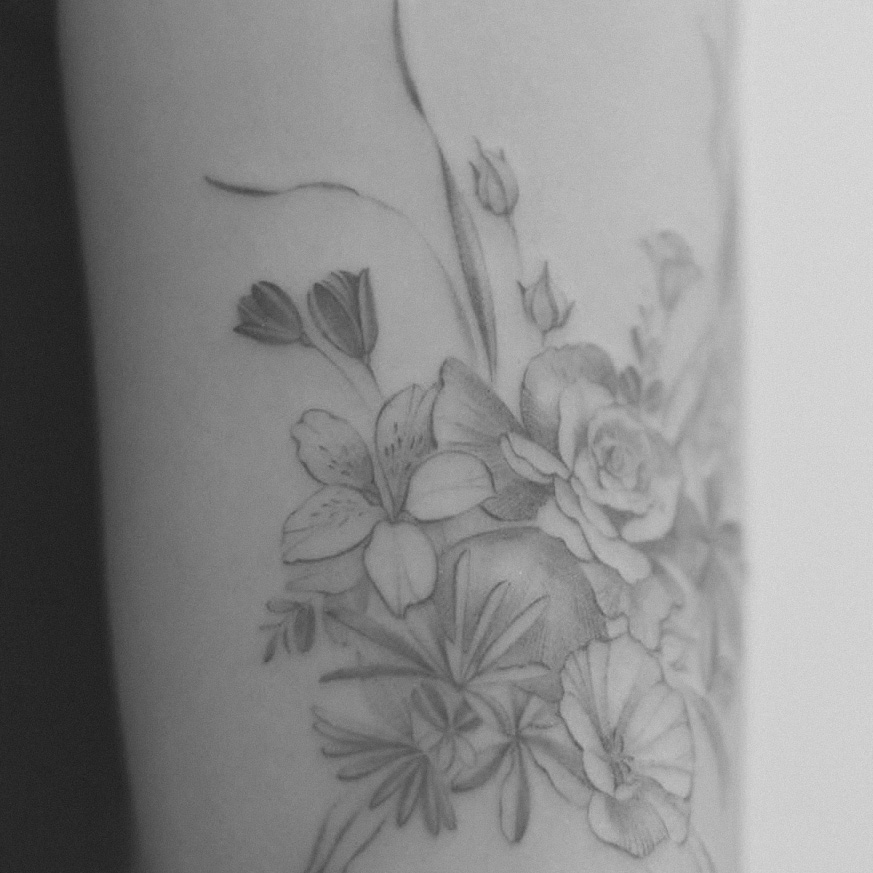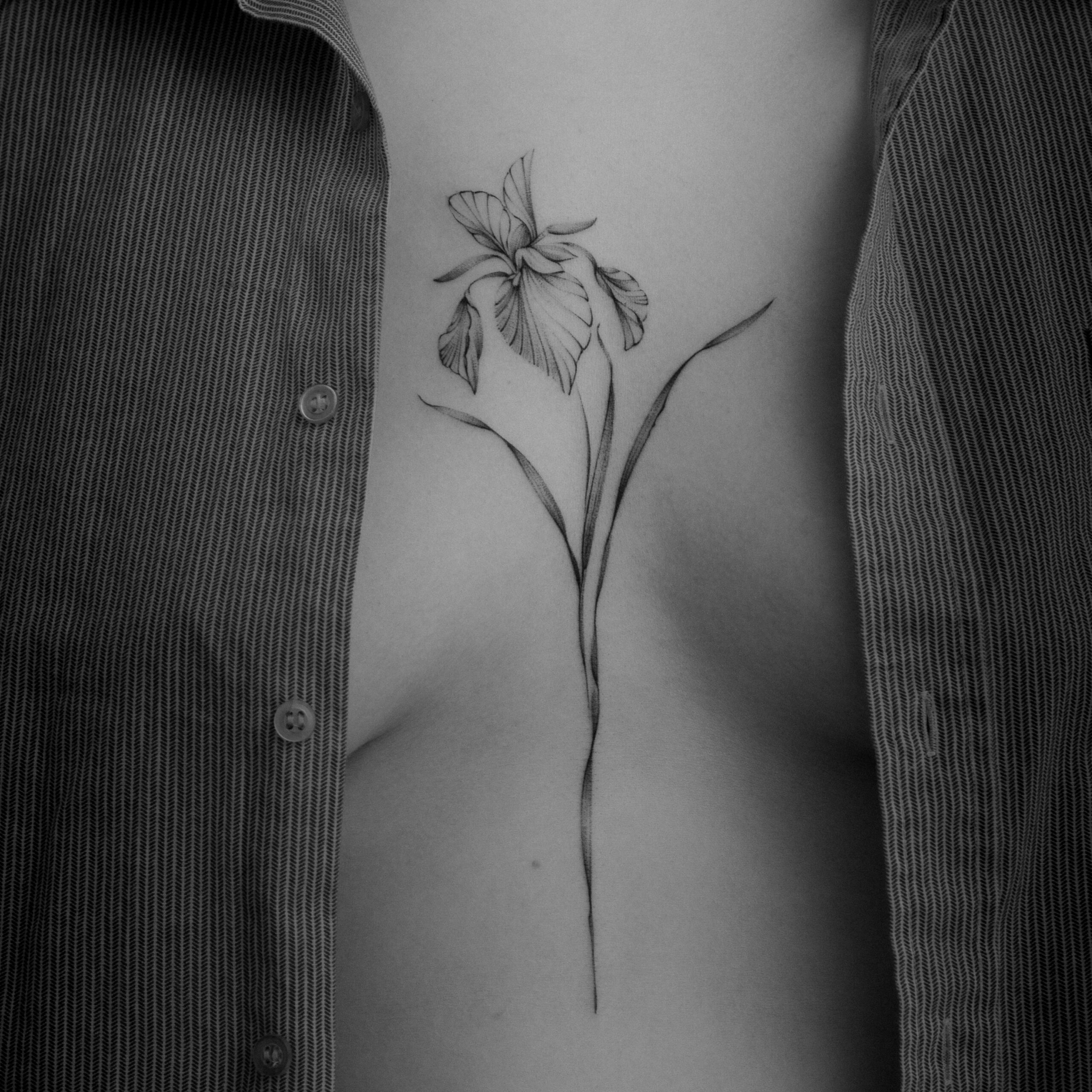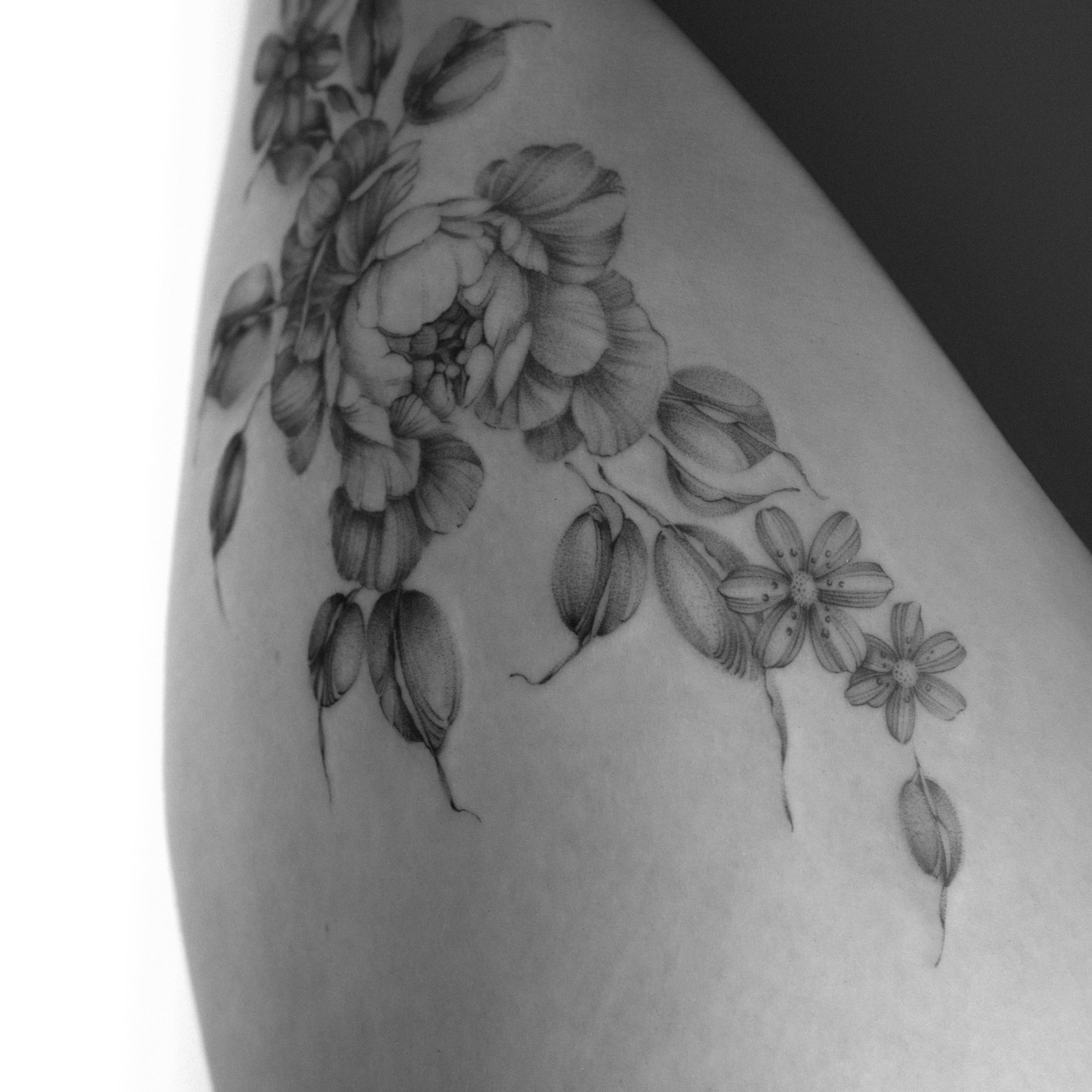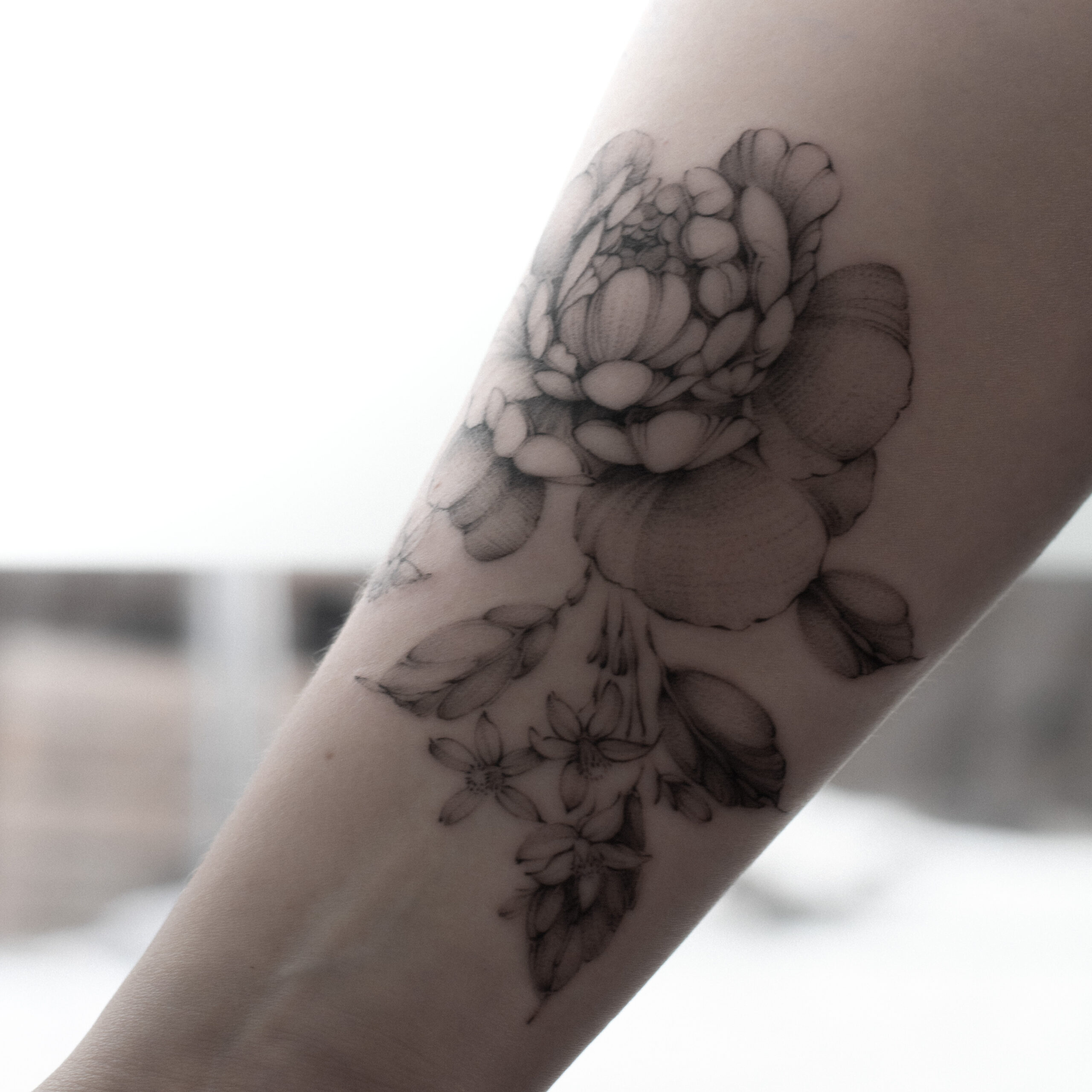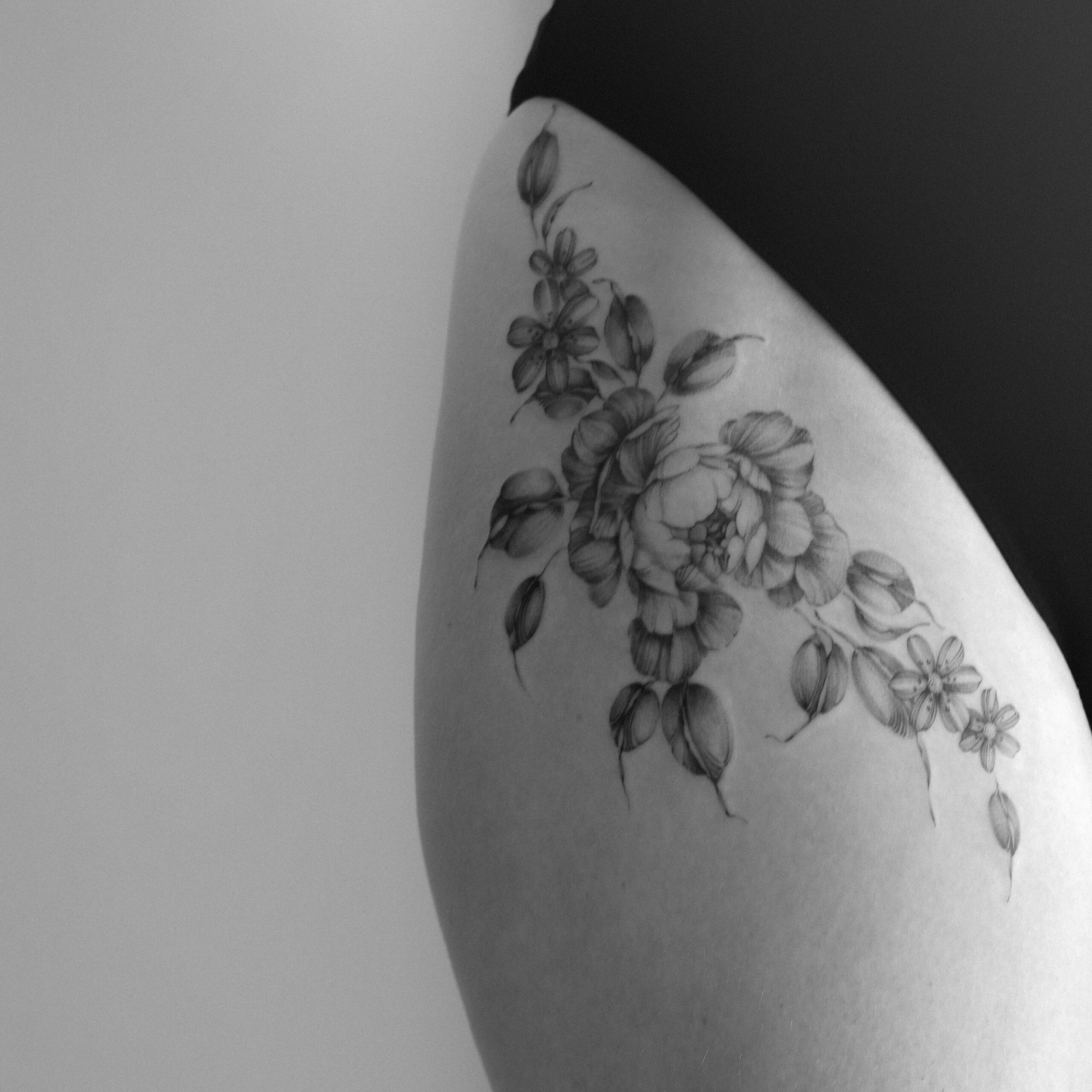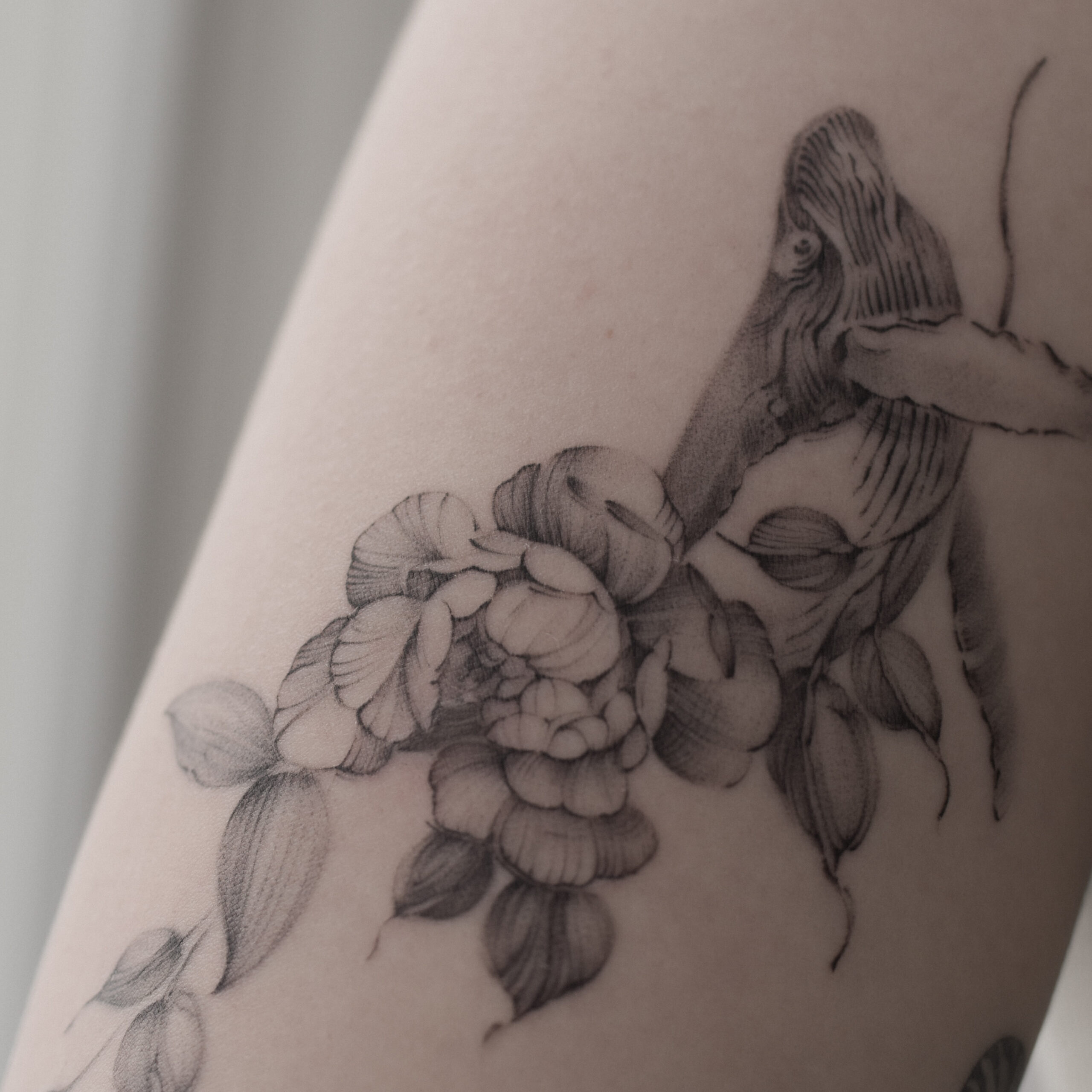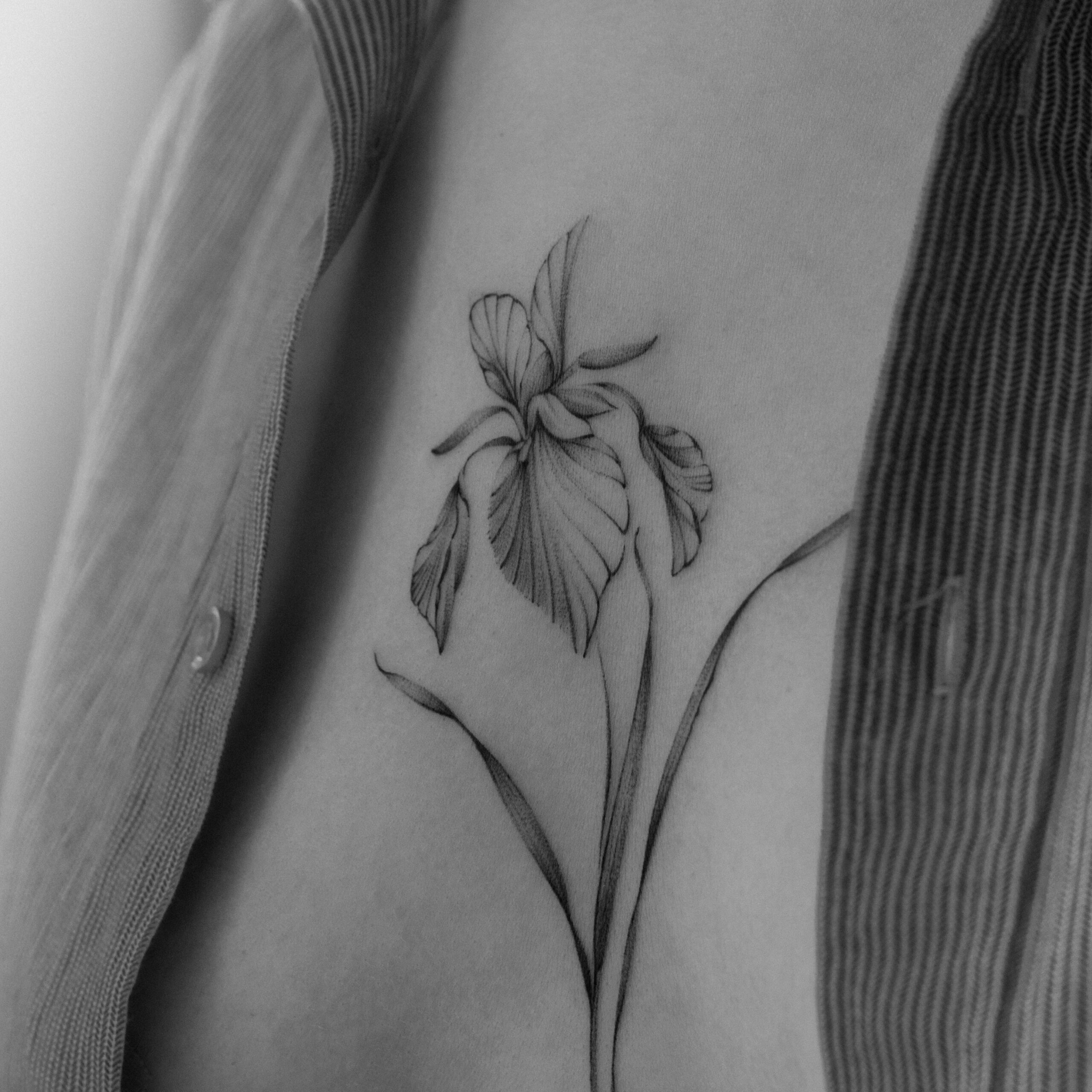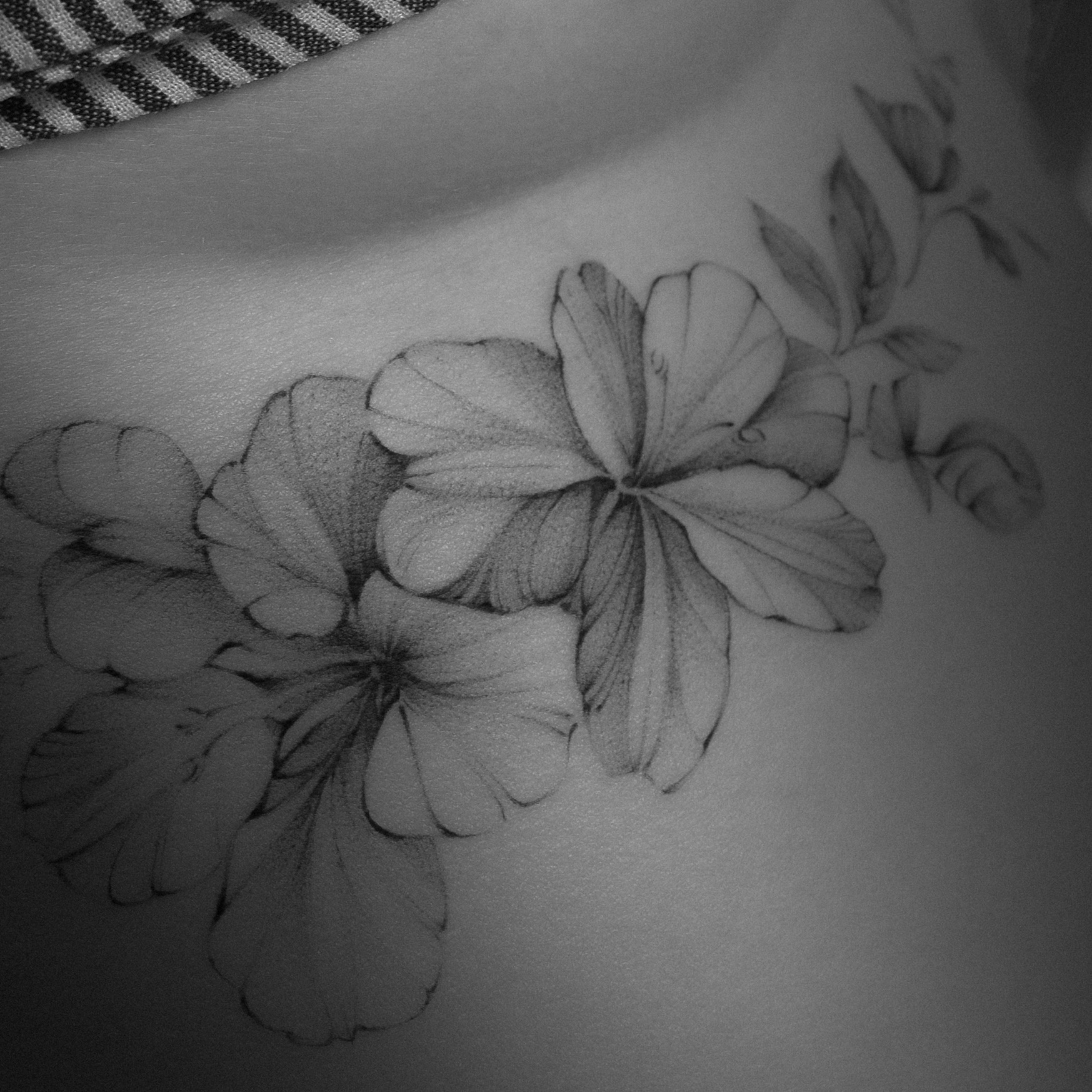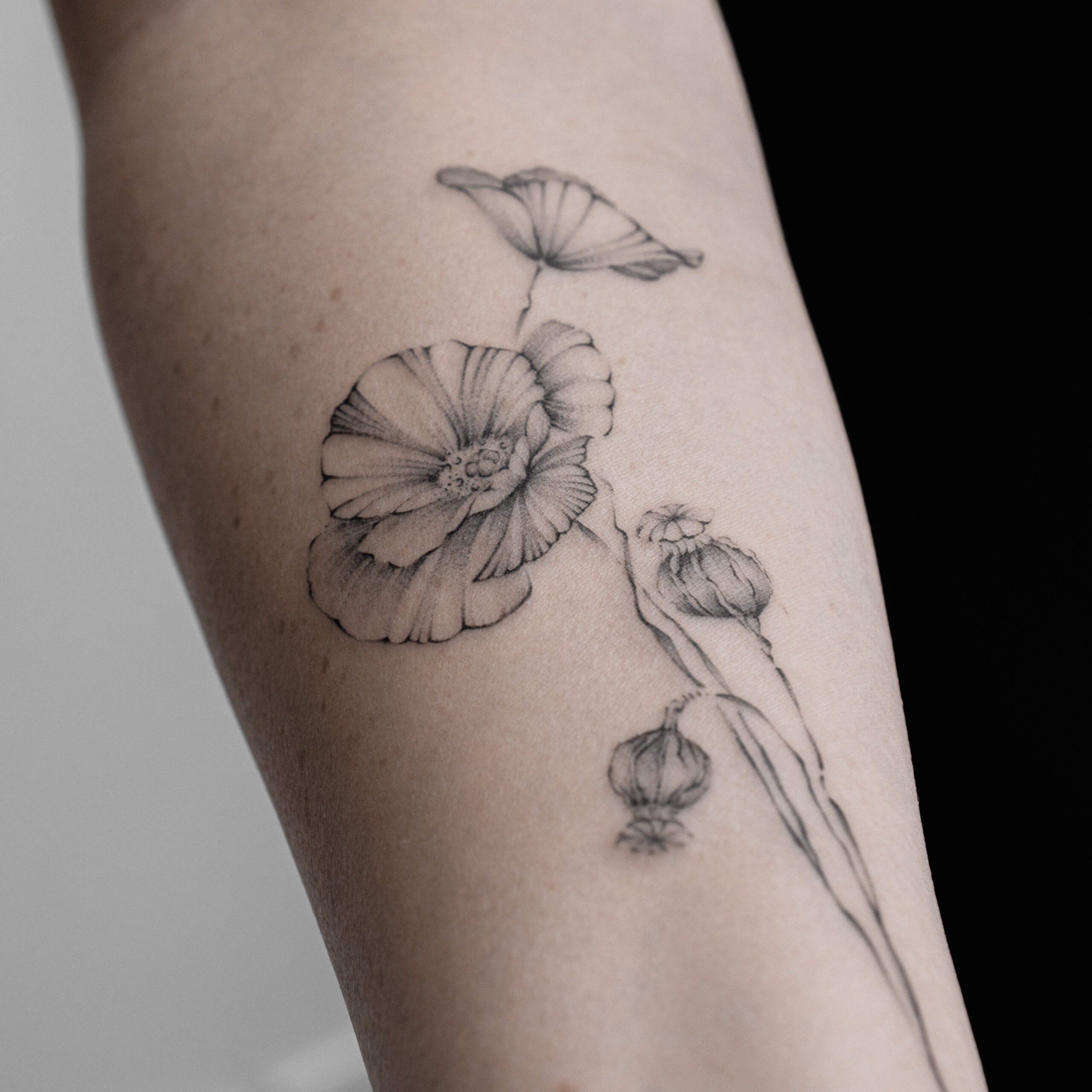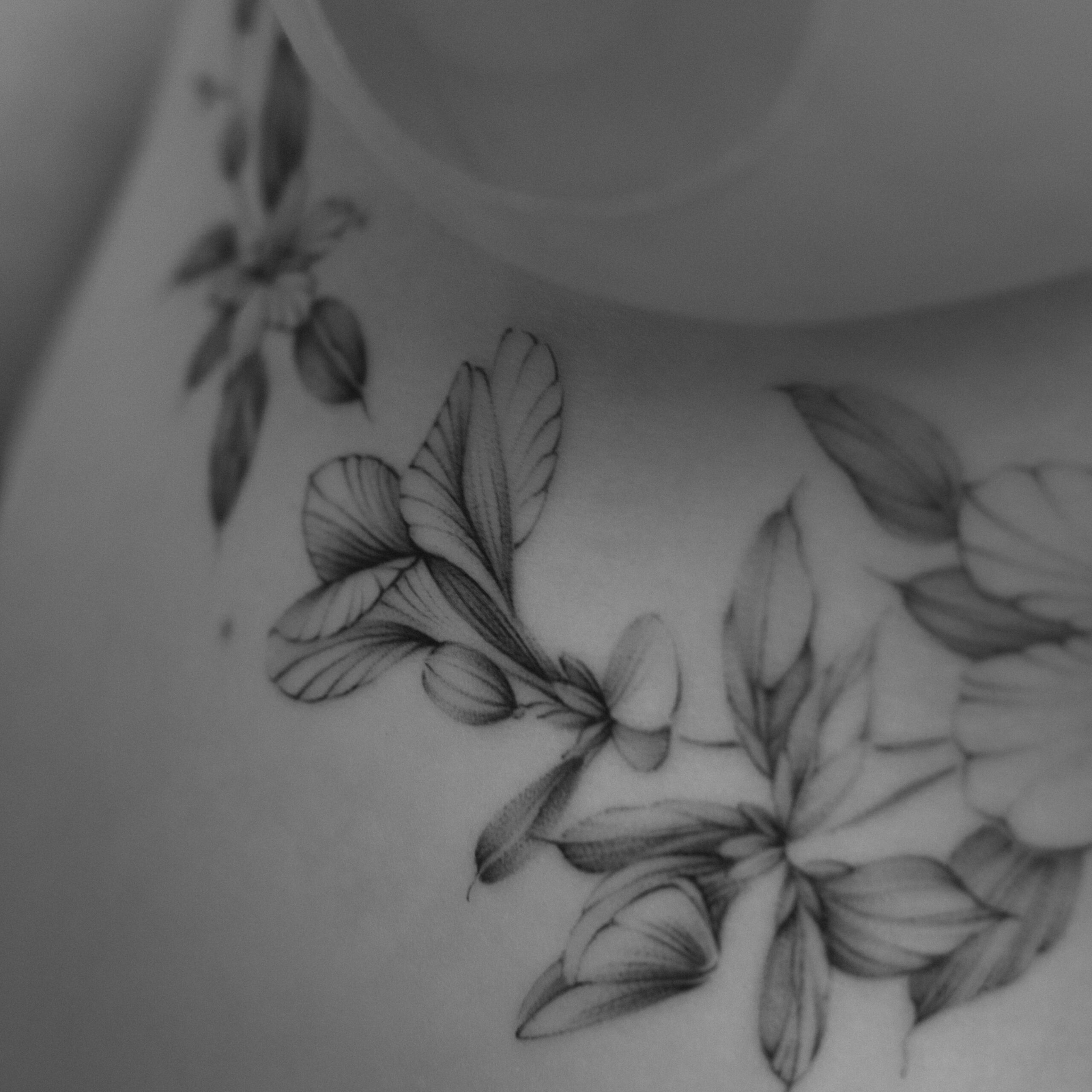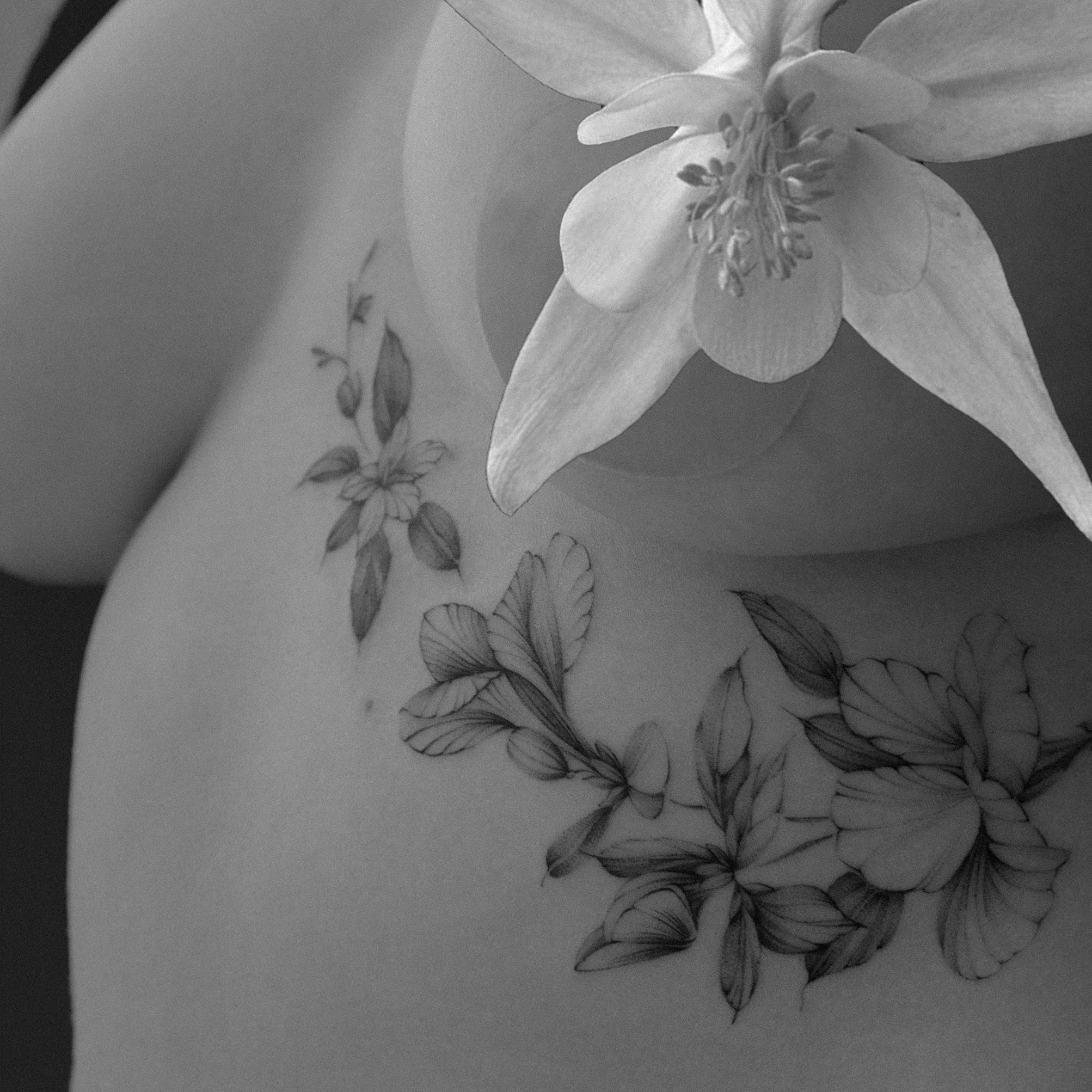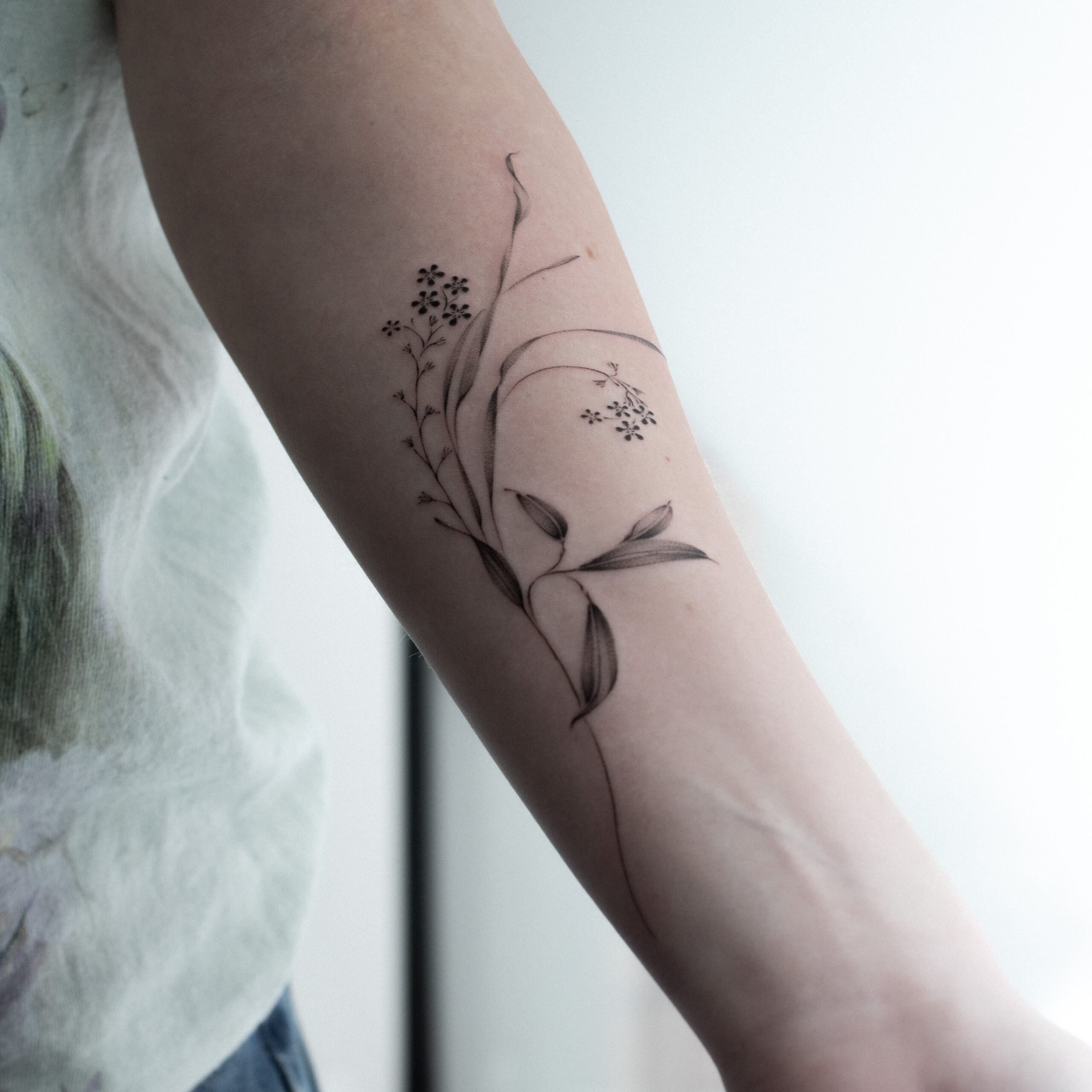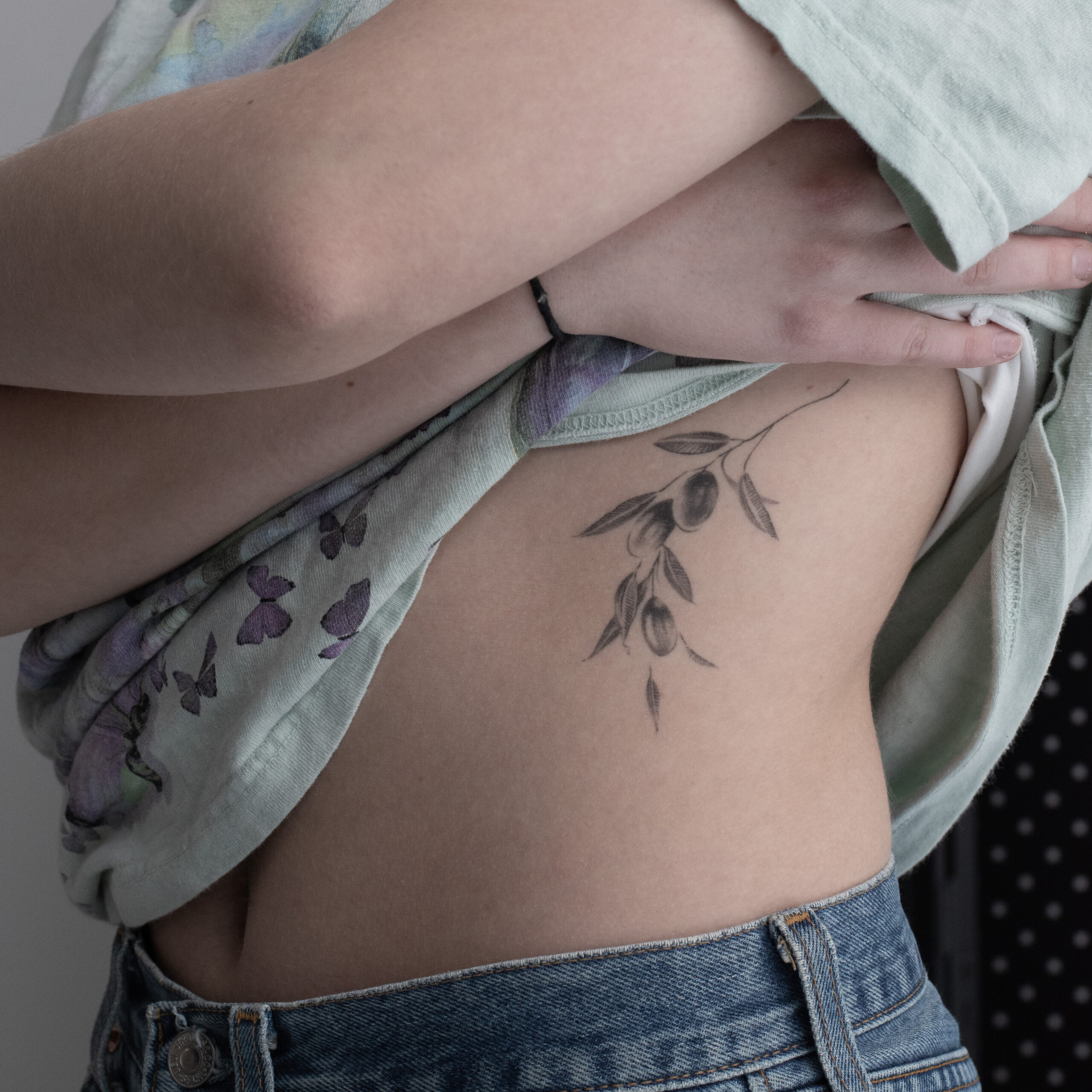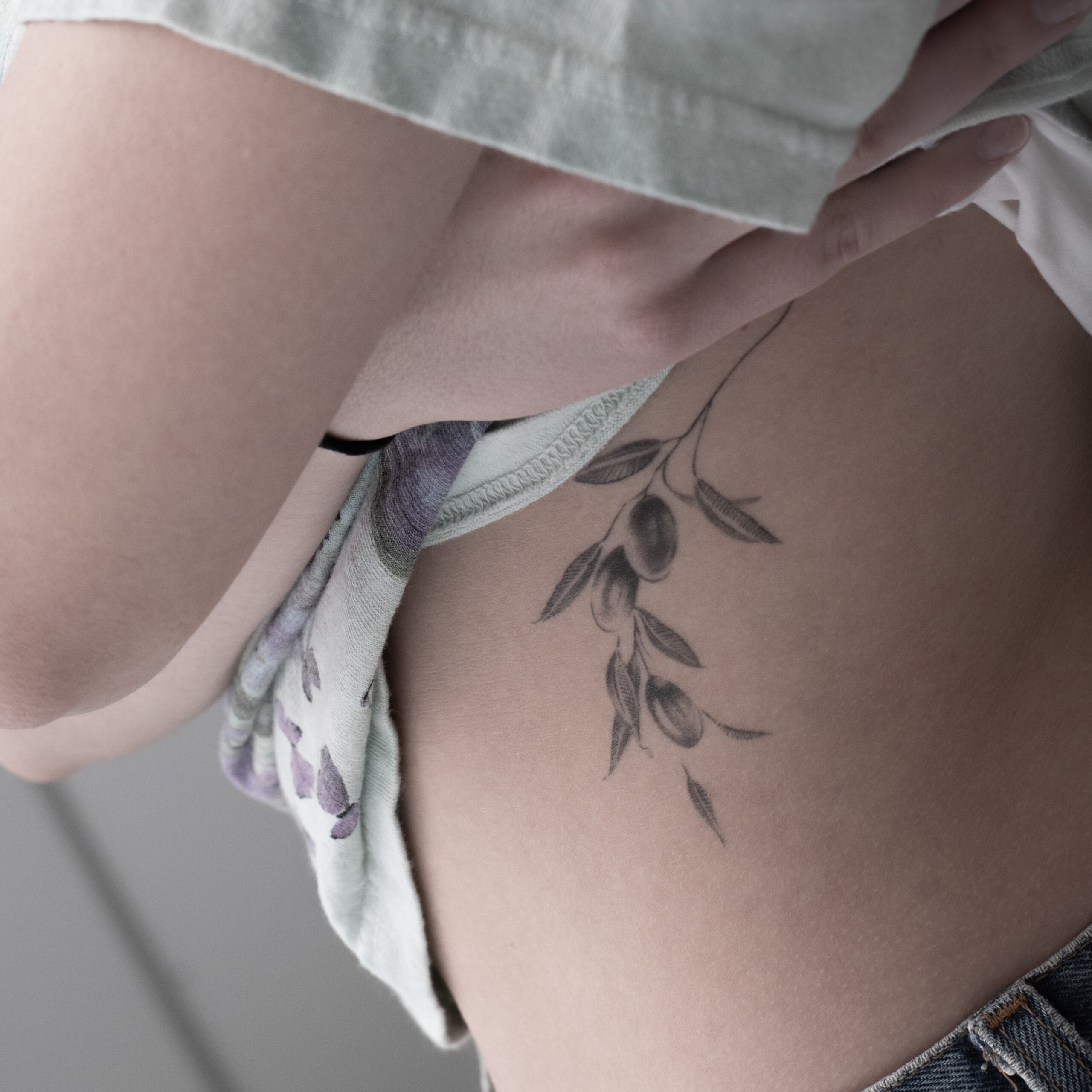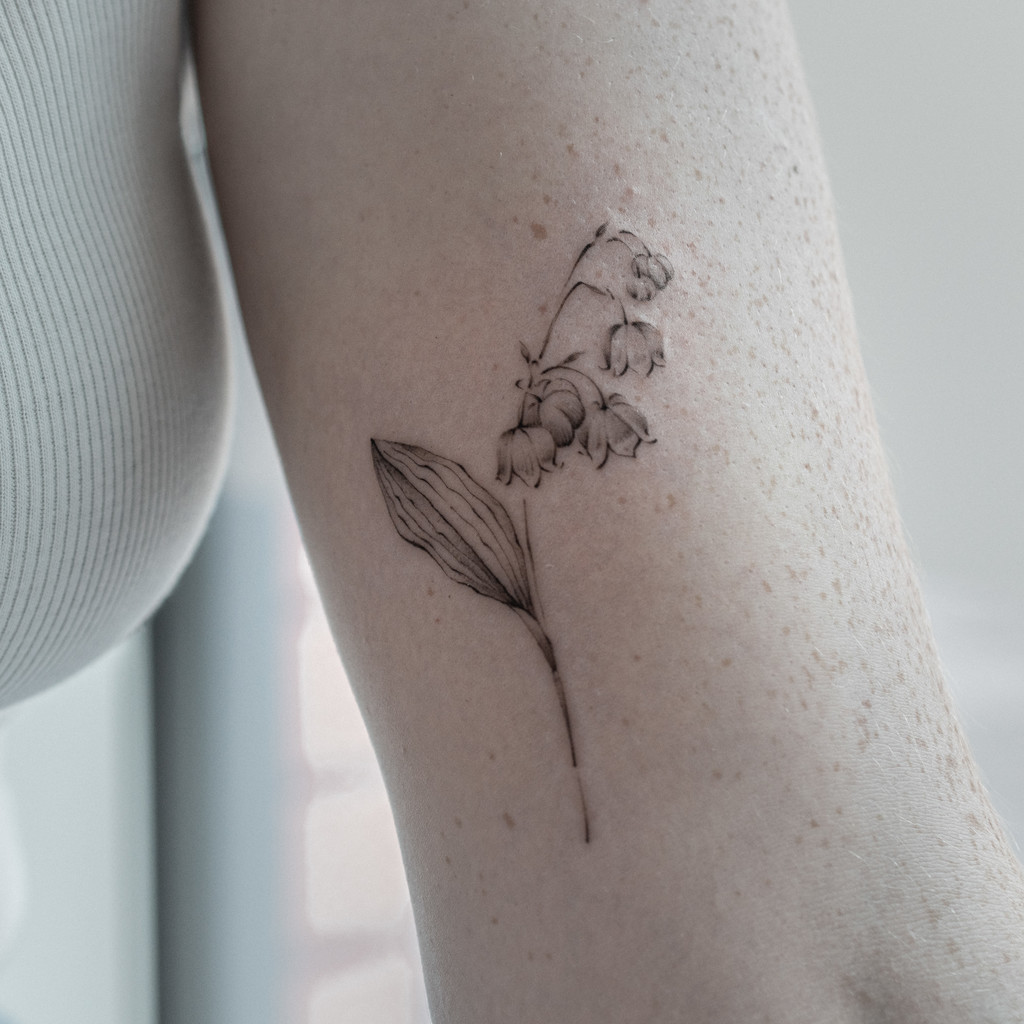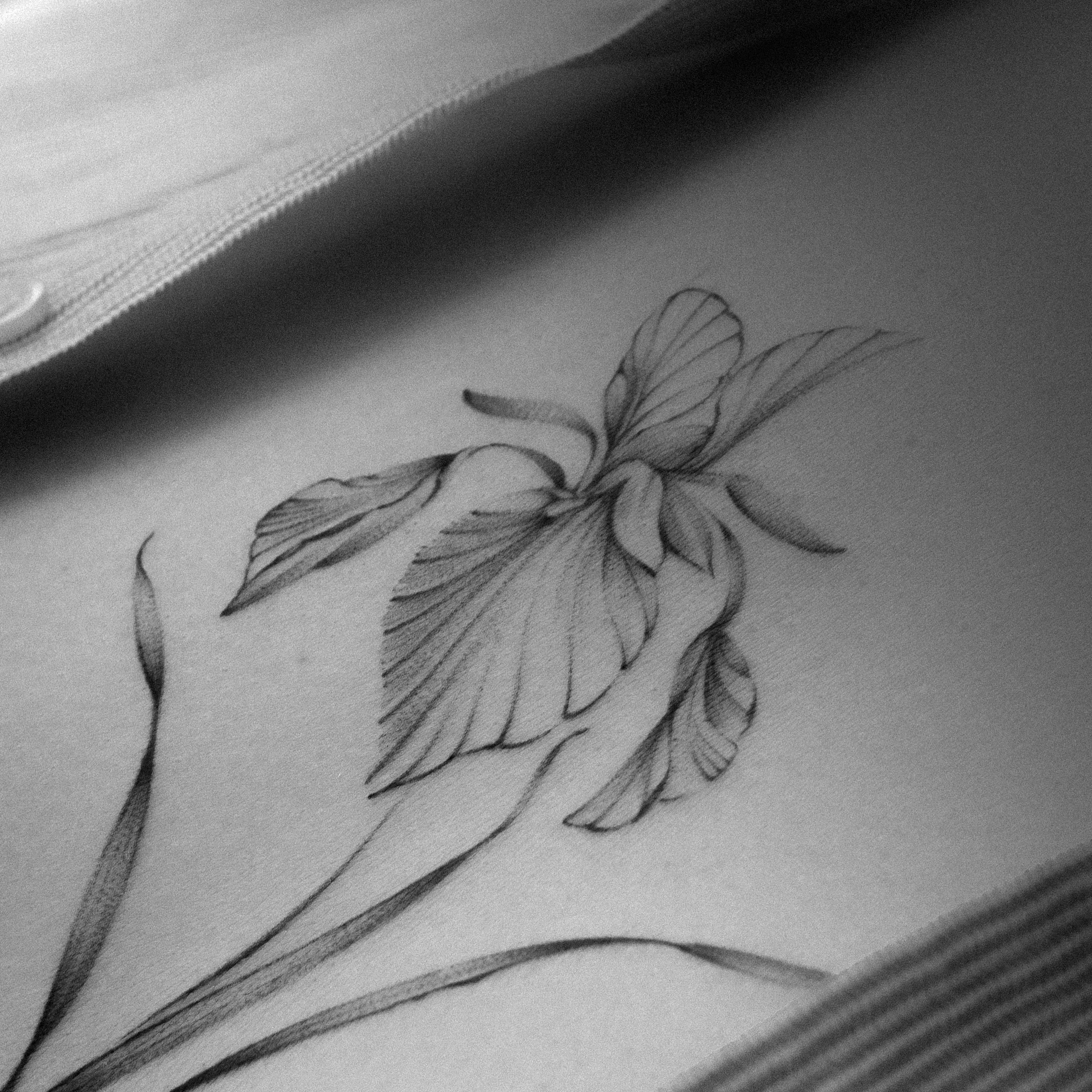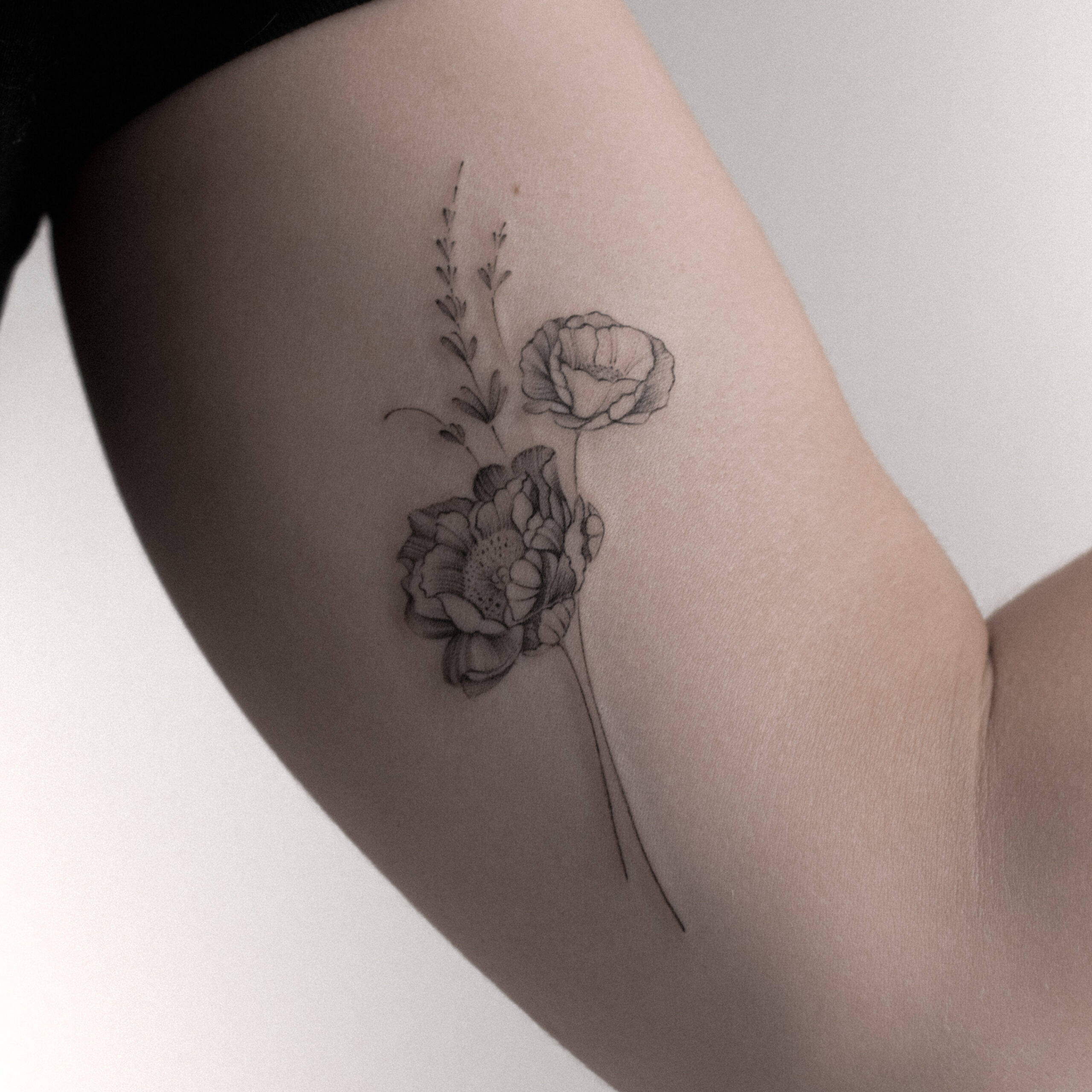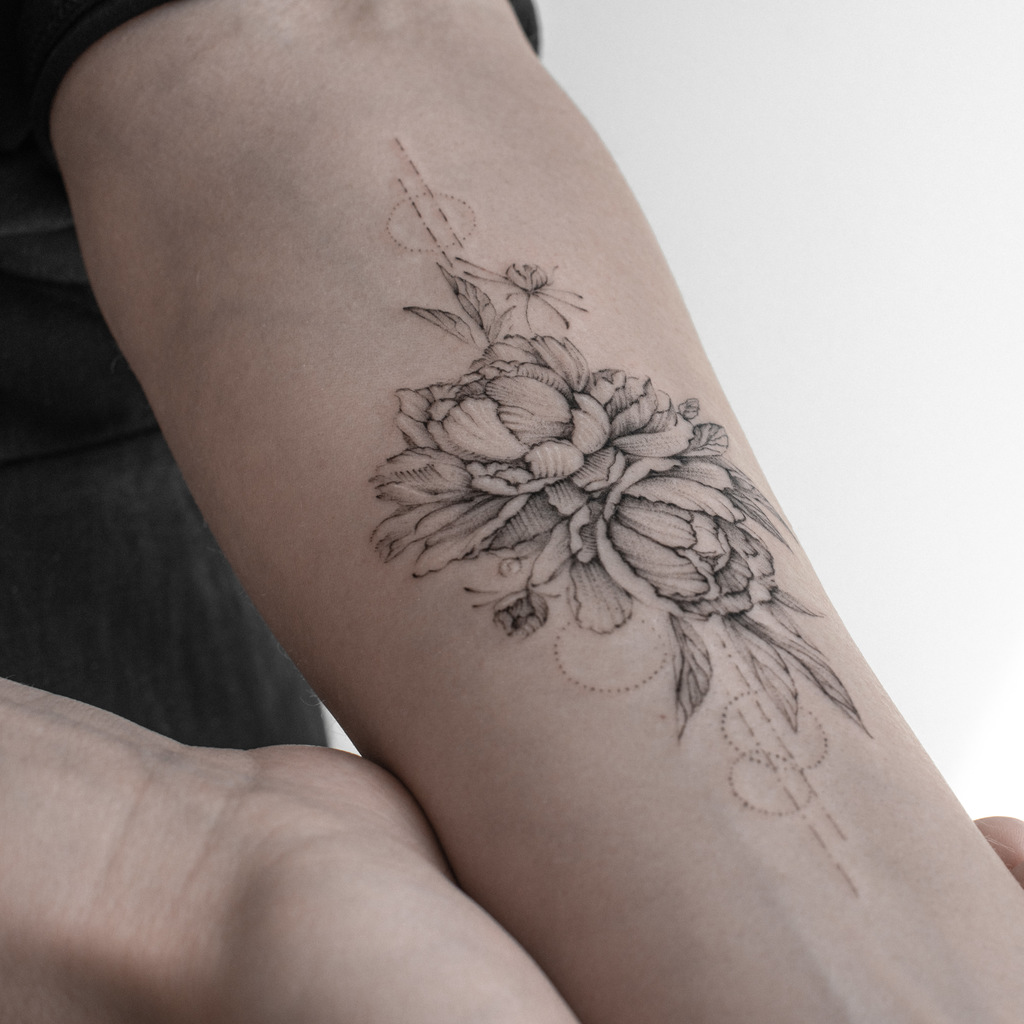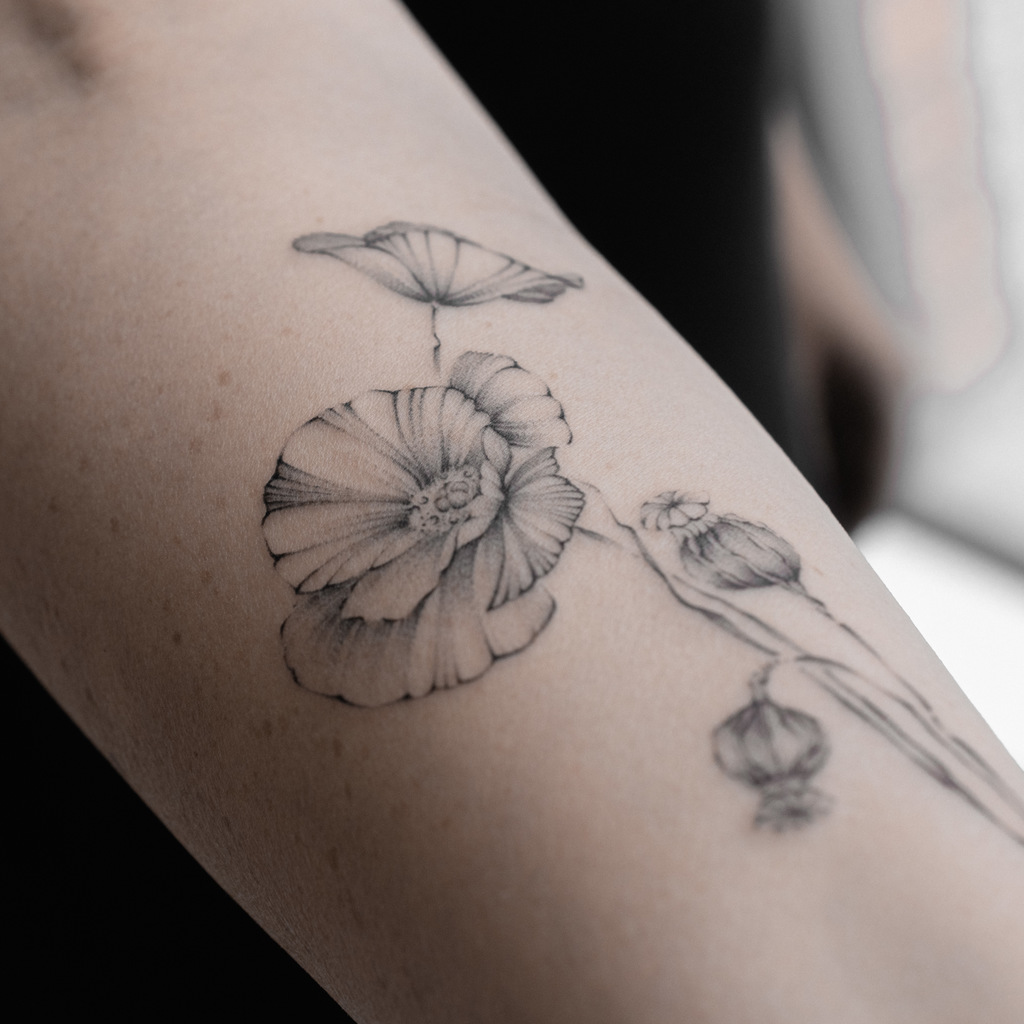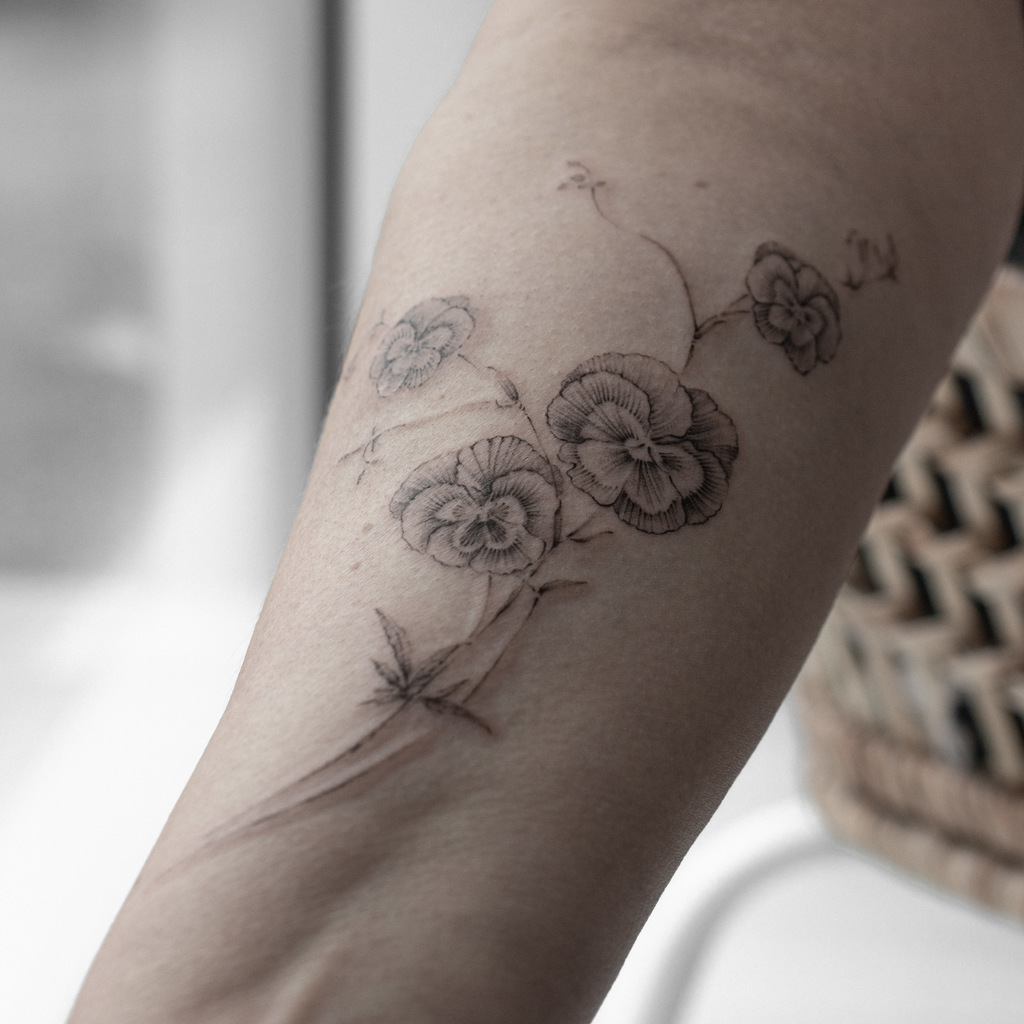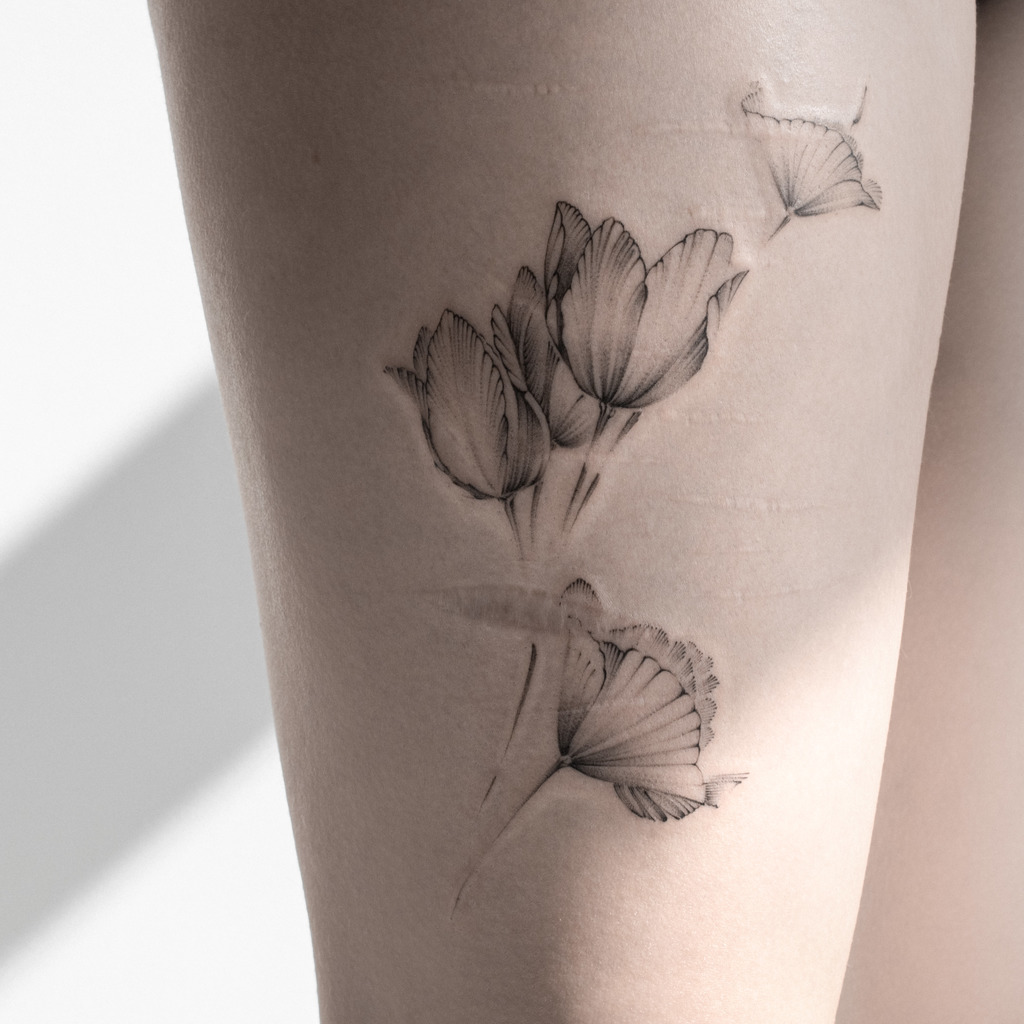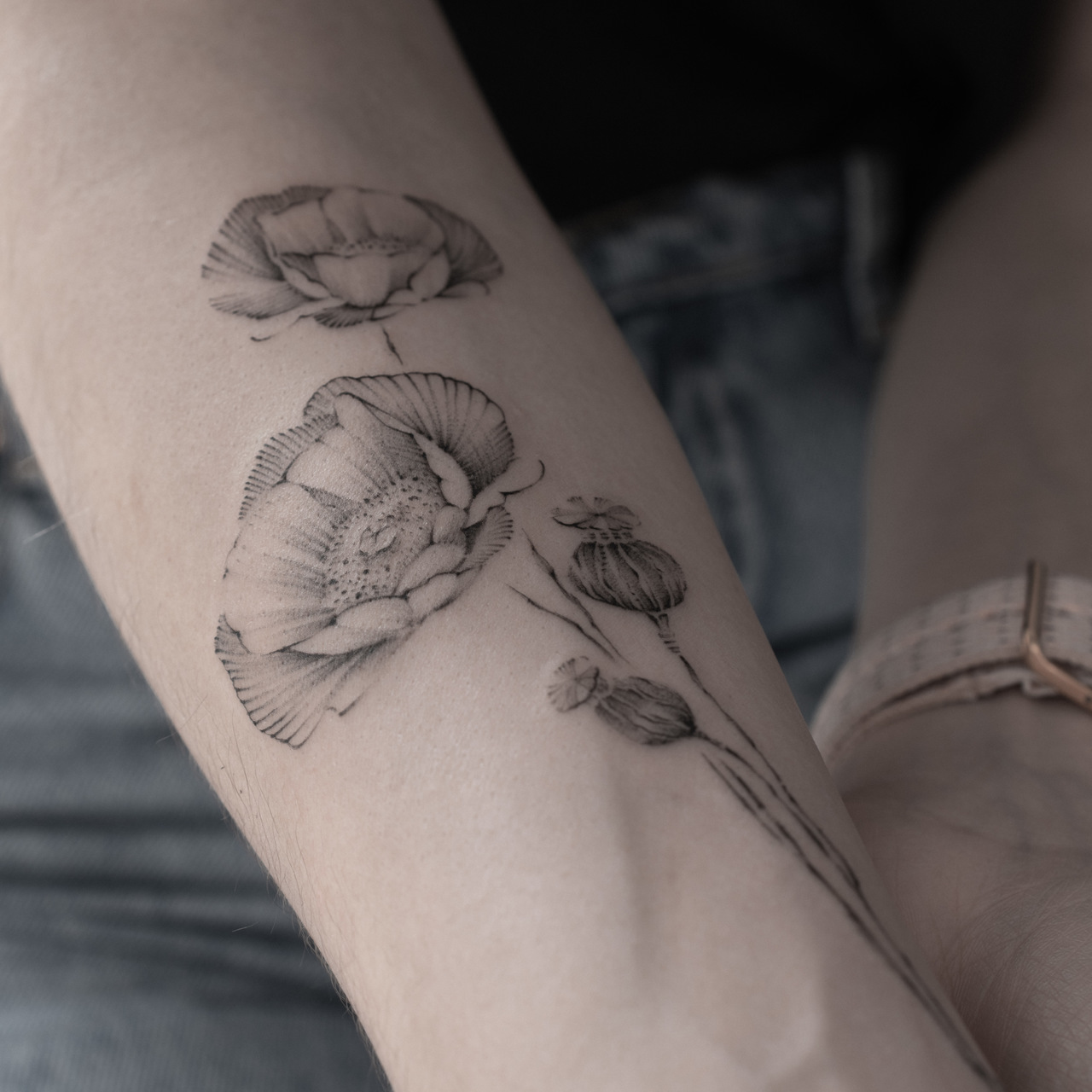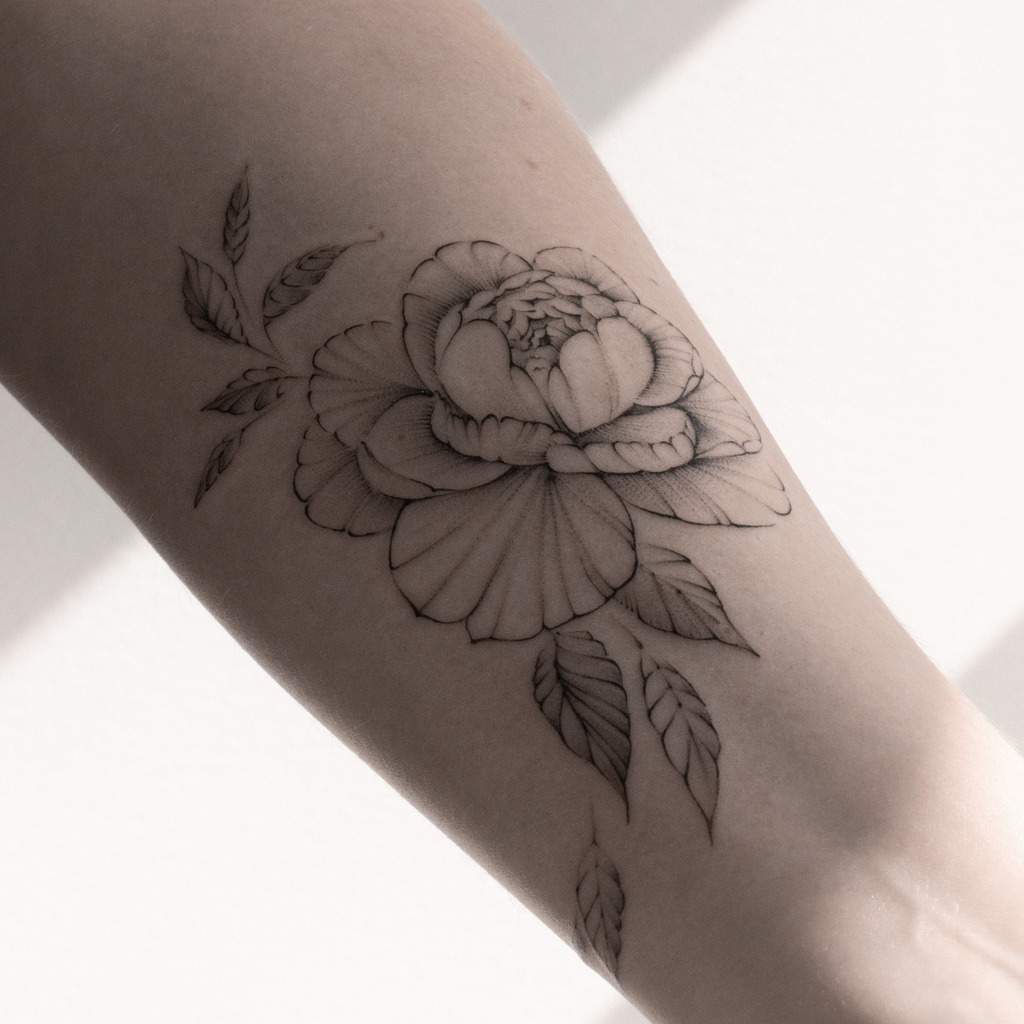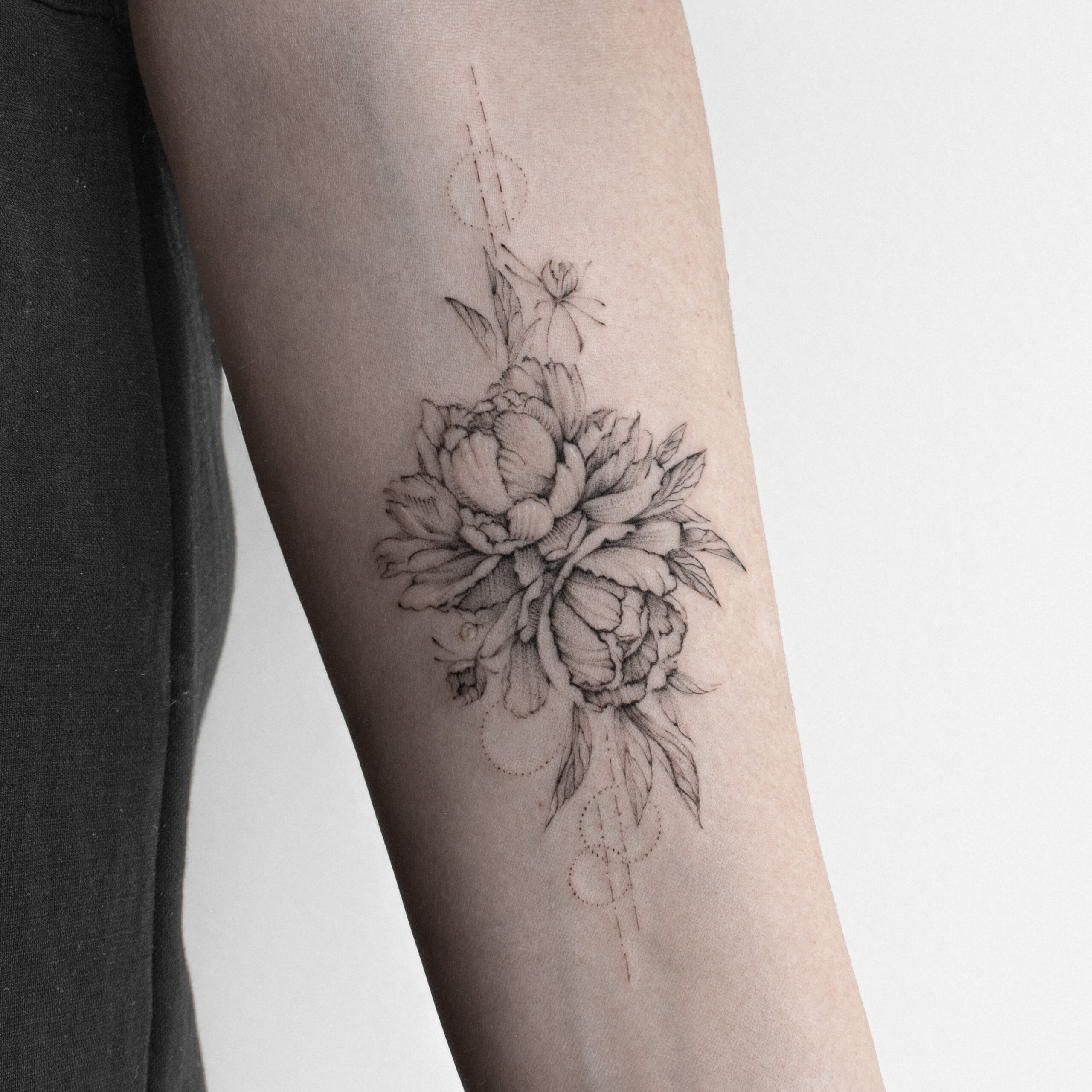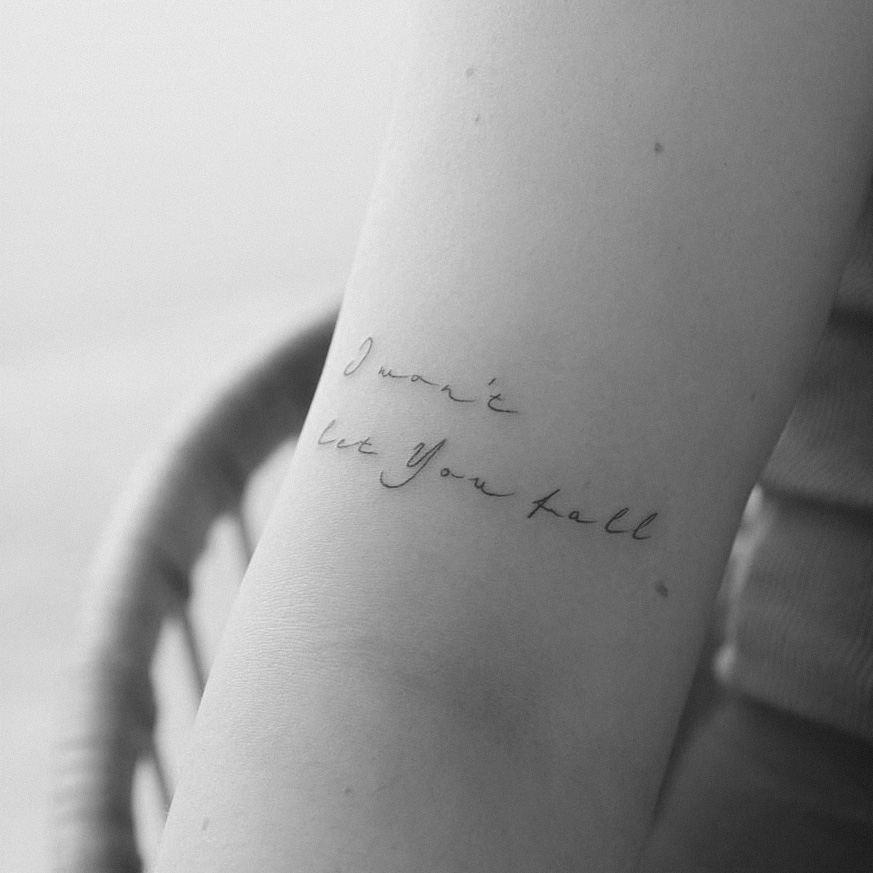
Understanding the Healing Process
.
Hello Everyone! In today’s blog, we will talk about something that’s crucial for anyone getting a tattoo – the HEALING process. As you may know, a tattoo isn’t just ink on skin; it’s a process that involves your body’s natural healing mechanisms. Understanding what happens during the healing phase can help you better care for your tattoo and ensure that it heals properly, so you can enjoy it for years to come. Let’s take a closer look at what happens inside your body when you get a tattoo, why aftercare is so important, and how to make sure your tattoo heals as it should.
.
What Happens Inside Your Body During the Tattoo Healing Process?
.
When a tattoo ARTIST creates a design on your skin. There is need to use a needle to insert ink into the dermis layer of your skin (which is the second layer of your skin, beneath the epidermis). This process causes tiny punctures, or wounds, that your body needs to heal.
.
1. Initial Reaction and Inflammation
- After your tattoo is done, your skin will naturally go into a state of inflammation. This is a normal response as your immune system begins to tackle the minor trauma to your skin. You might experience redness, swelling, and some tenderness in the first 24–48 hours. Please don’t panic. It is normal.
- Your body’s immune cells rush to repair the wound, which is why your tattoo might look a bit swollen and irritated in the beginning. That’s why it is important to be always healthy and well rested on a tattoo session. We need to be strong on that day 🙂
2. Healing Begins: The Scabbing Stage
- After that, your body starts to form a protective scab over the tattoo. This is a natural part of the healing process as your skin starts to close the wound and protect itself from infections.
- During this stage (which usually lasts a few days to a week), it’s very important not to pick at the scabs. Let them fall off naturally. If you pick them off too quick, you could risk pulling out the ink along with the scab, causing bad healing results.
3. Regeneration: New Skin Forms
- As the scab falls off, your skin underneath is still healing. This is because your skin is still regenerating, and it might look slightly different from how it will appear once fully healed.
- During this phase, your body is working on building new skin cells that will hold the tattoo ink in place. The ink is in the dermis, so it stays in place as your outer skin (epidermis) continues to heal. New skin must be build on top again.
4. Final Healing Phase: Skin and Ink Settle
- After about 3 to 4 weeks, your tattoo should begin to have its final look. The skin has fully regenerated. Typically, fresh tattoo is still pretty intense. During the first year, it will be slighly less. Kind of melting into Your skin. After that time. It looks very similar to a long time.
- While the outer layer of skin may appear healed, it’s important to remember that the deeper layers (where the ink sits) continue to settle and stabilize for up to 6 weeks or longer.
- Even though the tattoo might look healed, the deeper layers of the skin are still in the final stages of healing, which is why aftercare remains important.
.
Why Aftercare Is So Important
.
1. Preventing Infection
- Tattoos are essentially open wounds, and like any wound, they’re susceptible to infection if not properly cared for. Keeping the tattoo clean and following a proper aftercare routine helps prevent harmful bacteria from entering the skin.
- The most common infections come from unwashed hands, dirty surfaces, pets, or not keeping the tattoo covered during the early healing stage.
2. Reducing Irritation and Itching
- As your tattoo heals, your skin will naturally itch and dry out. This is part of the healing process, but scratching or picking at your tattoo can disrupt the healing process and potentially lead to infection or scarring.
- Using a gentle moisturizer ( like Bepanthen Tattoo here in the Netherlands) can help reduce itching and keep the skin hydrated without interfering with the healing.
3. Preventing
- Tattoos that aren’t properly cared for can develop fade prematurely. By following an aftercare routine, you’re helping to ensure the ink stays locked in the skin where it’s supposed to be.
- If you don’t moisturize the skin and let it heal properly, it can become too dry, leading to cracking or scabbing that might pull out some of the ink.
4. Ensuring Vibrant Colors and Clear Lines
- Your tattoo is a work of art, and proper aftercare ensures that the colors remain vibrant, and the lines stay sharp. Without good care, the tattoo may heal unevenly, resulting in blotchy or faded spots.
.
Essential Aftercare Tips for Your Tattoo
.
-
Keep it clean: Gently wash your tattoo with lukewarm water and mild, natural soap. Don’t scrub—just gently with your hands.
-
Moisturize: Once the tattoo is clean, apply a thin layer of moisturizer or tattoo aftercare cream. Be careful not to over-apply—it should be just enough to keep the skin hydrated.
-
Avoid direct sunlight: Keep your tattoo out of direct sunlight for at least a few weeks. UV rays can fade the ink and slow down the healing process. If you must go outside, cover your tattoo with clothing or apply a high SPF sunscreen once it’s healed.
-
No scratching or picking: While your tattoo is healing, try not to scratch or pick at the scabs. Let them fall off naturally to avoid scarring.
-
Avoid soaking: For the first few weeks, don’t submerge your tattoo in pools, hot tubs, or baths. This could introduce bacteria or cause the tattoo to fade. Showers are fine, but avoid hot, prolonged showers that might soften the healing skin.
-
Wear loose clothing: Avoid tight clothing over the tattooed area to reduce irritation and allow the skin to breathe.
.
Final Thoughts
Your tattoo is a lasting piece of art, and it’s important to give it the proper care during the healing process. By understanding how your body heals after getting a tattoo and following the recommended aftercare steps, you can ensure that your tattoo stays vibrant and looking great for years to come. Don’t underestimate the power of a solid aftercare routine—your tattoo will thank you for it! Have you ever experienced any challenges with healing? Let us know and we will help You! And remember, if you need assistance with aftercare or have any concerns, feel free to reach out. We’re always here to help at VADELMA Tattoo!
.
Take care and enjoy your new tattoo!
.
Love,
Simon
.
.
Hello Everyone! In today’s blog, we will talk about something that’s crucial for anyone getting a tattoo – the HEALING process. As you may know, a tattoo isn’t just ink on skin; it’s a process that involves your body’s natural healing mechanisms. Understanding what happens during the healing phase can help you better care for your tattoo and ensure that it heals properly, so you can enjoy it for years to come. Let’s take a closer look at what happens inside your body when you get a tattoo, why aftercare is so important, and how to make sure your tattoo heals as it should.
.
What Happens Inside Your Body During the Tattoo Healing Process?
.
When a tattoo ARTIST creates a design on your skin. There is need to use a needle to insert ink into the dermis layer of your skin (which is the second layer of your skin, beneath the epidermis). This process causes tiny punctures, or wounds, that your body needs to heal.
.
1. Initial Reaction and Inflammation
- After your tattoo is done, your skin will naturally go into a state of inflammation. This is a normal response as your immune system begins to tackle the minor trauma to your skin. You might experience redness, swelling, and some tenderness in the first 24–48 hours. Please don’t panic. It is normal.
- Your body’s immune cells rush to repair the wound, which is why your tattoo might look a bit swollen and irritated in the beginning. That’s why it is important to be always healthy and well rested on a tattoo session. We need to be strong on that day 🙂
2. Healing Begins: The Scabbing Stage
- After that, your body starts to form a protective scab over the tattoo. This is a natural part of the healing process as your skin starts to close the wound and protect itself from infections.
- During this stage (which usually lasts a few days to a week), it’s very important not to pick at the scabs. Let them fall off naturally. If you pick them off too quick, you could risk pulling out the ink along with the scab, causing bad healing results.
3. Regeneration: New Skin Forms
- As the scab falls off, your skin underneath is still healing. This is because your skin is still regenerating, and it might look slightly different from how it will appear once fully healed.
- During this phase, your body is working on building new skin cells that will hold the tattoo ink in place. The ink is in the dermis, so it stays in place as your outer skin (epidermis) continues to heal. New skin must be build on top again.
4. Final Healing Phase: Skin and Ink Settle
- After about 3 to 4 weeks, your tattoo should begin to have its final look. The skin has fully regenerated. Typically, fresh tattoo is still pretty intense. During the first year, it will be slighly less. Kind of melting into Your skin. After that time. It looks very similar to a long time.
- While the outer layer of skin may appear healed, it’s important to remember that the deeper layers (where the ink sits) continue to settle and stabilize for up to 6 weeks or longer.
- Even though the tattoo might look healed, the deeper layers of the skin are still in the final stages of healing, which is why aftercare remains important.
.
Why Aftercare Is So Important
.
1. Preventing Infection
- Tattoos are essentially open wounds, and like any wound, they’re susceptible to infection if not properly cared for. Keeping the tattoo clean and following a proper aftercare routine helps prevent harmful bacteria from entering the skin.
- The most common infections come from unwashed hands, dirty surfaces, pets, or not keeping the tattoo covered during the early healing stage.
2. Reducing Irritation and Itching
- As your tattoo heals, your skin will naturally itch and dry out. This is part of the healing process, but scratching or picking at your tattoo can disrupt the healing process and potentially lead to infection or scarring.
- Using a gentle moisturizer ( like Bepanthen Tattoo here in the Netherlands) can help reduce itching and keep the skin hydrated without interfering with the healing.
3. Preventing
- Tattoos that aren’t properly cared for can develop fade prematurely. By following an aftercare routine, you’re helping to ensure the ink stays locked in the skin where it’s supposed to be.
- If you don’t moisturize the skin and let it heal properly, it can become too dry, leading to cracking or scabbing that might pull out some of the ink.
4. Ensuring Vibrant Colors and Clear Lines
- Your tattoo is a work of art, and proper aftercare ensures that the colors remain vibrant, and the lines stay sharp. Without good care, the tattoo may heal unevenly, resulting in blotchy or faded spots.
.
Essential Aftercare Tips for Your Tattoo
.
-
Keep it clean: Gently wash your tattoo with lukewarm water and mild, natural soap. Don’t scrub—just gently with your hands.
-
Moisturize: Once the tattoo is clean, apply a thin layer of moisturizer or tattoo aftercare cream. Be careful not to over-apply—it should be just enough to keep the skin hydrated.
-
Avoid direct sunlight: Keep your tattoo out of direct sunlight for at least a few weeks. UV rays can fade the ink and slow down the healing process. If you must go outside, cover your tattoo with clothing or apply a high SPF sunscreen once it’s healed.
-
No scratching or picking: While your tattoo is healing, try not to scratch or pick at the scabs. Let them fall off naturally to avoid scarring.
-
Avoid soaking: For the first few weeks, don’t submerge your tattoo in pools, hot tubs, or baths. This could introduce bacteria or cause the tattoo to fade. Showers are fine, but avoid hot, prolonged showers that might soften the healing skin.
-
Wear loose clothing: Avoid tight clothing over the tattooed area to reduce irritation and allow the skin to breathe.
.
Final Thoughts
Your tattoo is a lasting piece of art, and it’s important to give it the proper care during the healing process. By understanding how your body heals after getting a tattoo and following the recommended aftercare steps, you can ensure that your tattoo stays vibrant and looking great for years to come. Don’t underestimate the power of a solid aftercare routine—your tattoo will thank you for it! Have you ever experienced any challenges with healing? Let us know and we will help You! And remember, if you need assistance with aftercare or have any concerns, feel free to reach out. We’re always here to help at VADELMA Tattoo!
.
Take care and enjoy your new tattoo!
.
Love,
Simon
.

